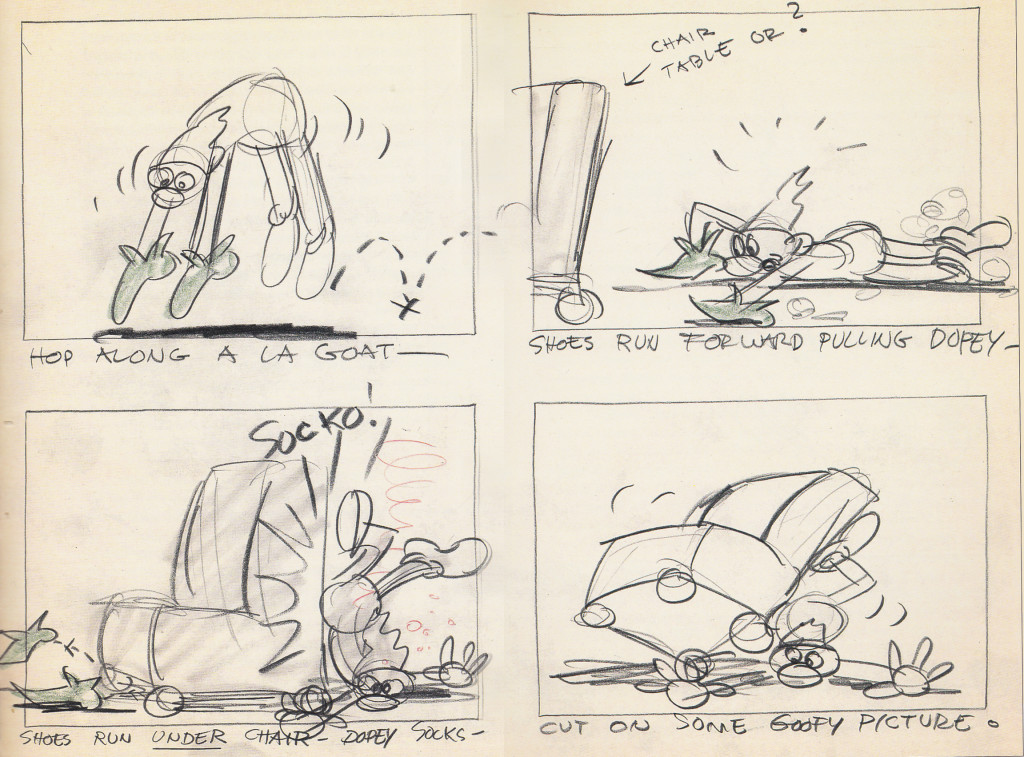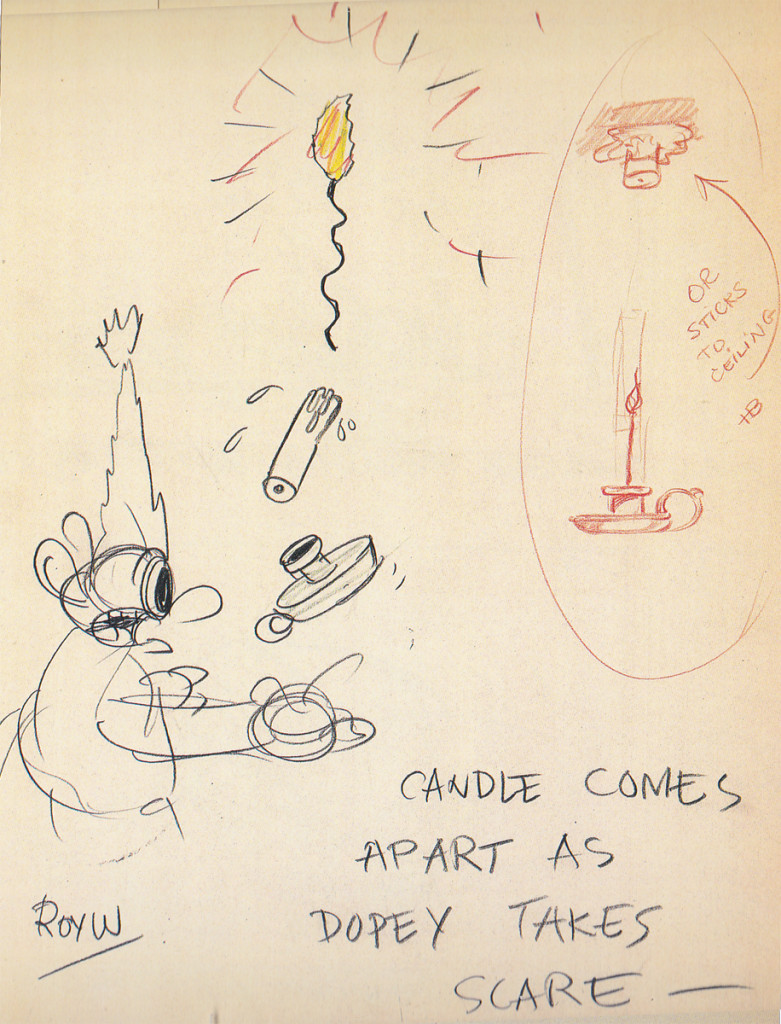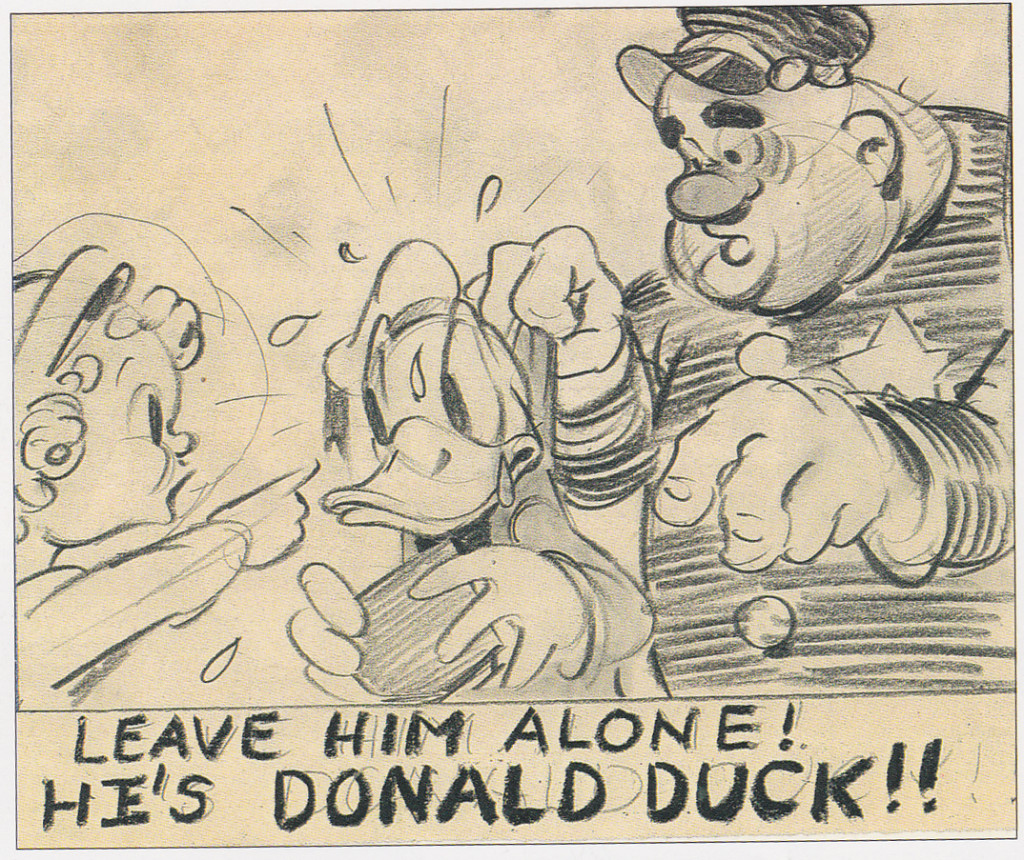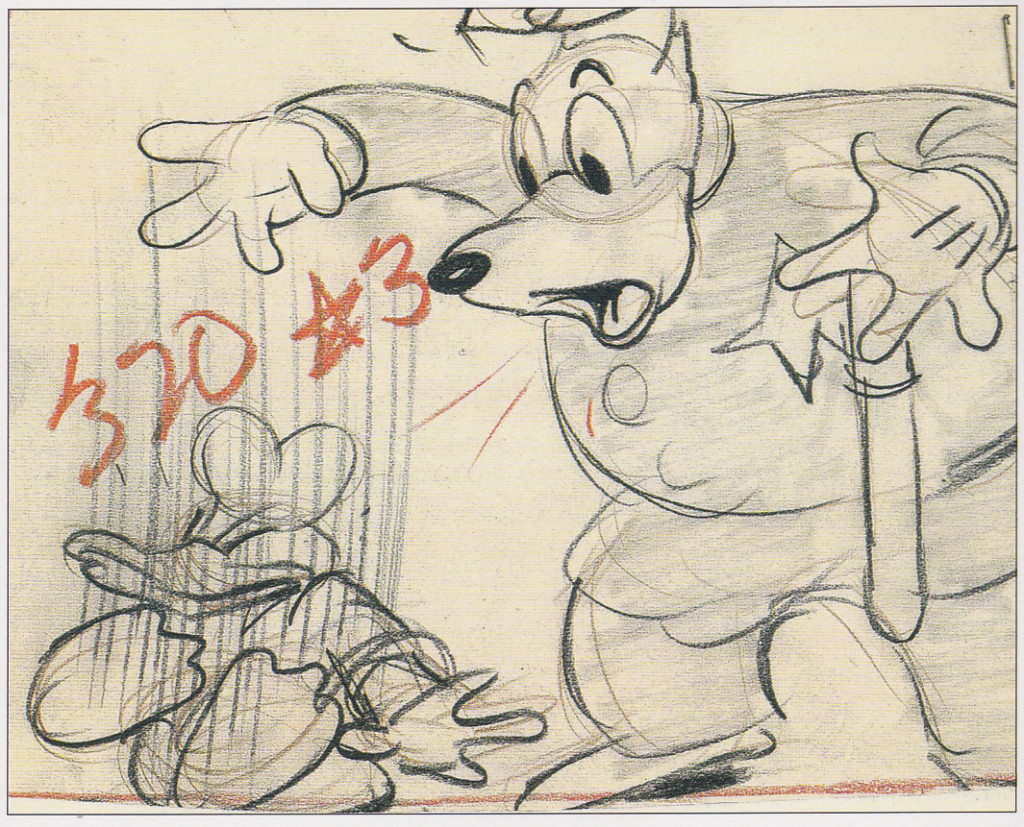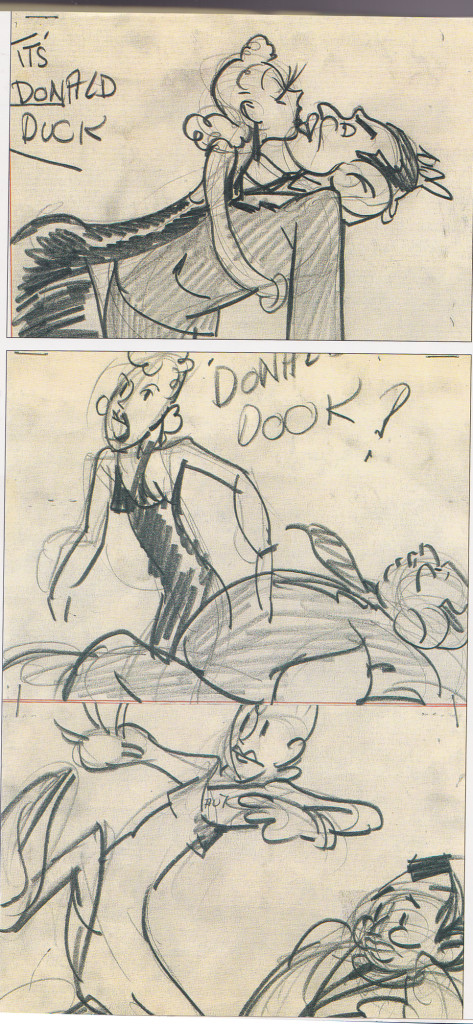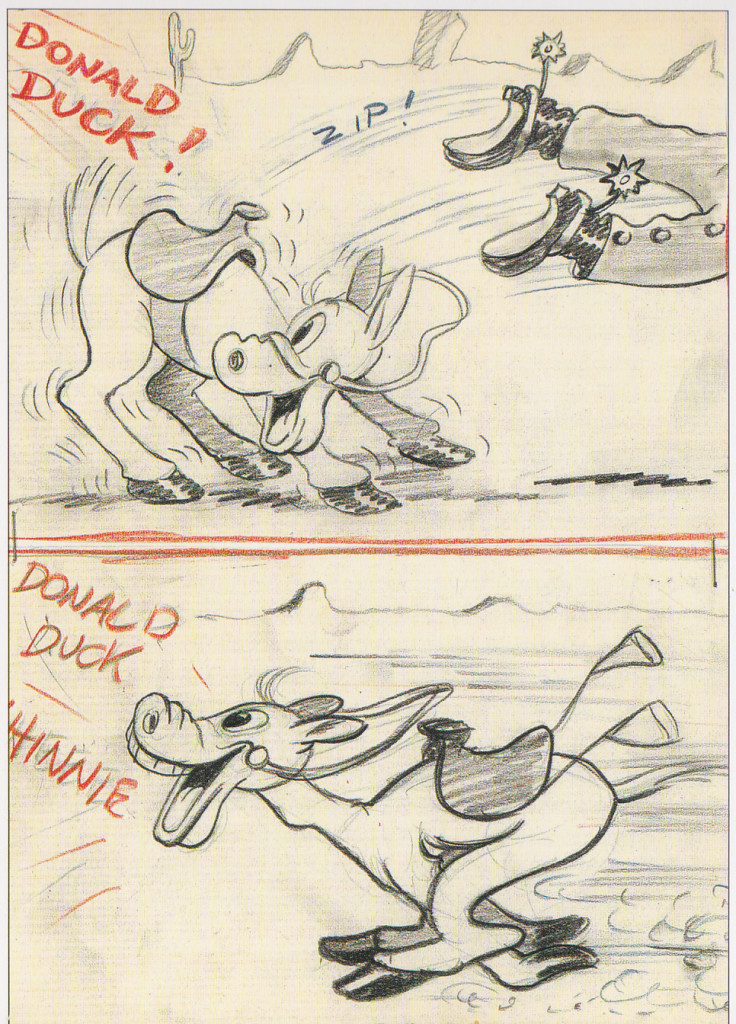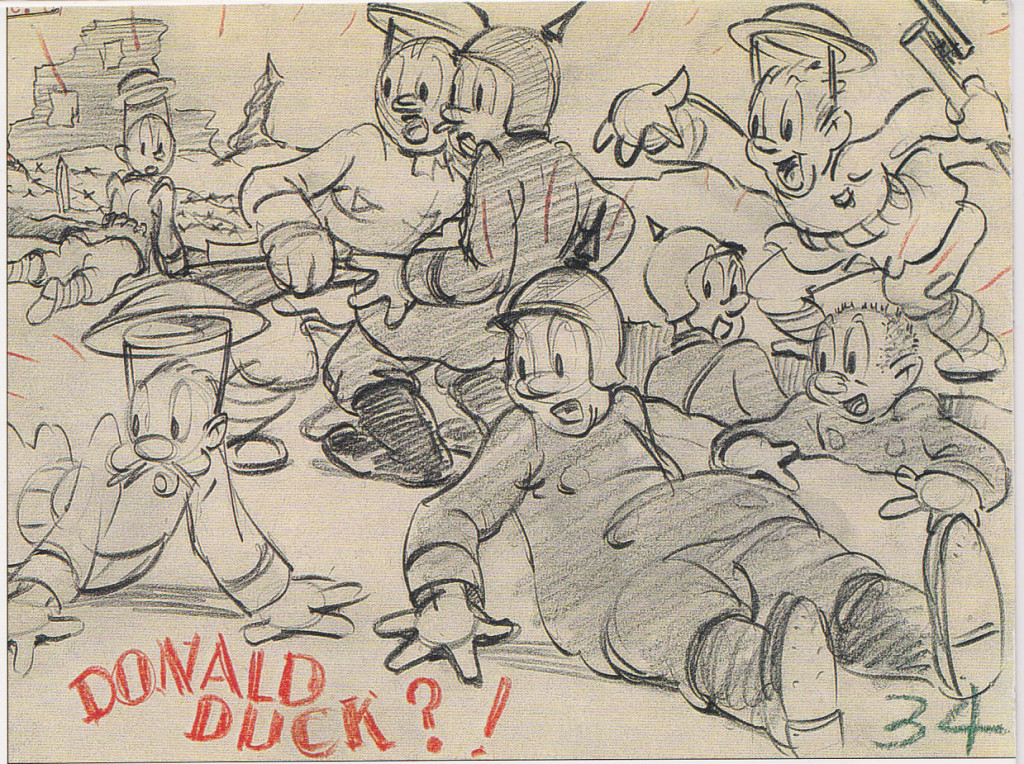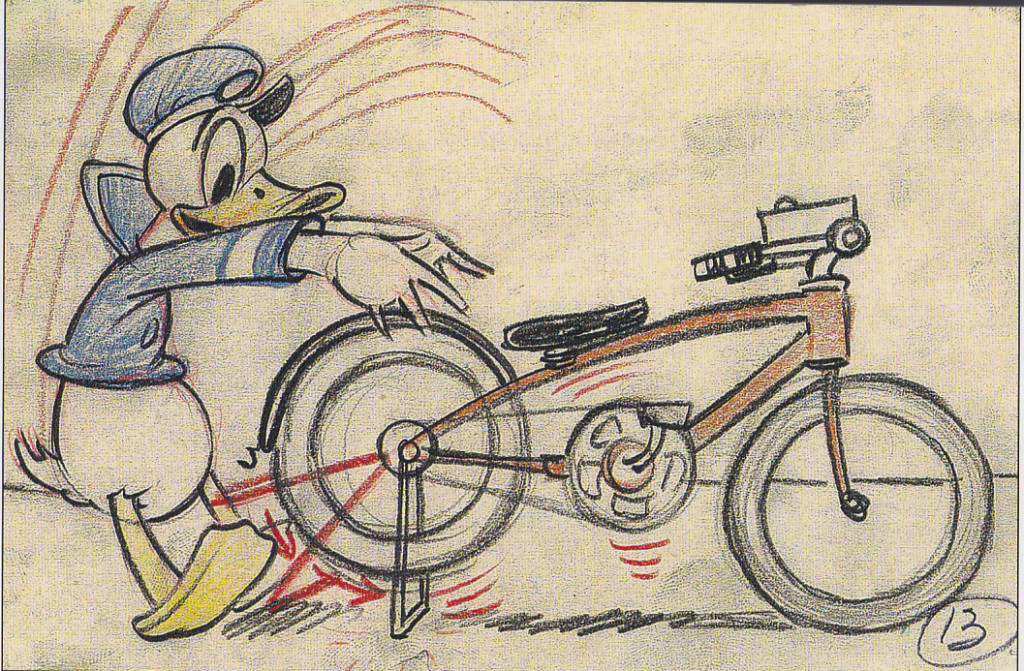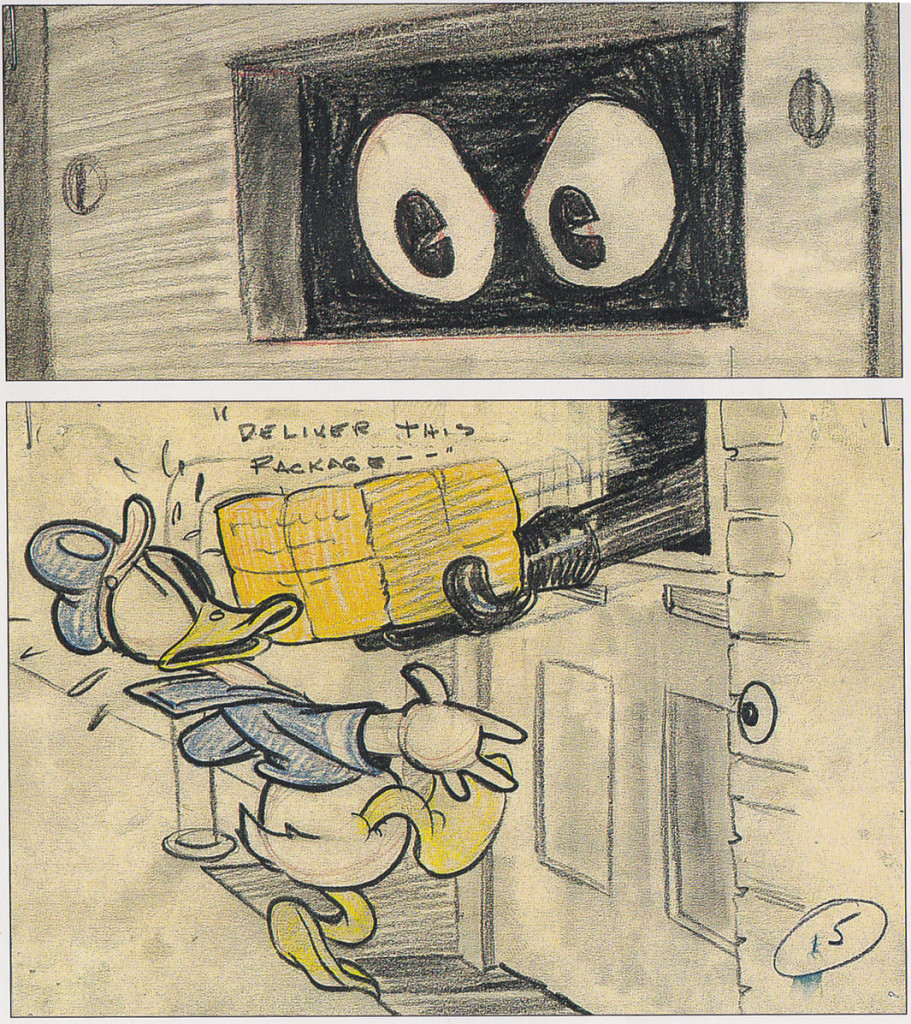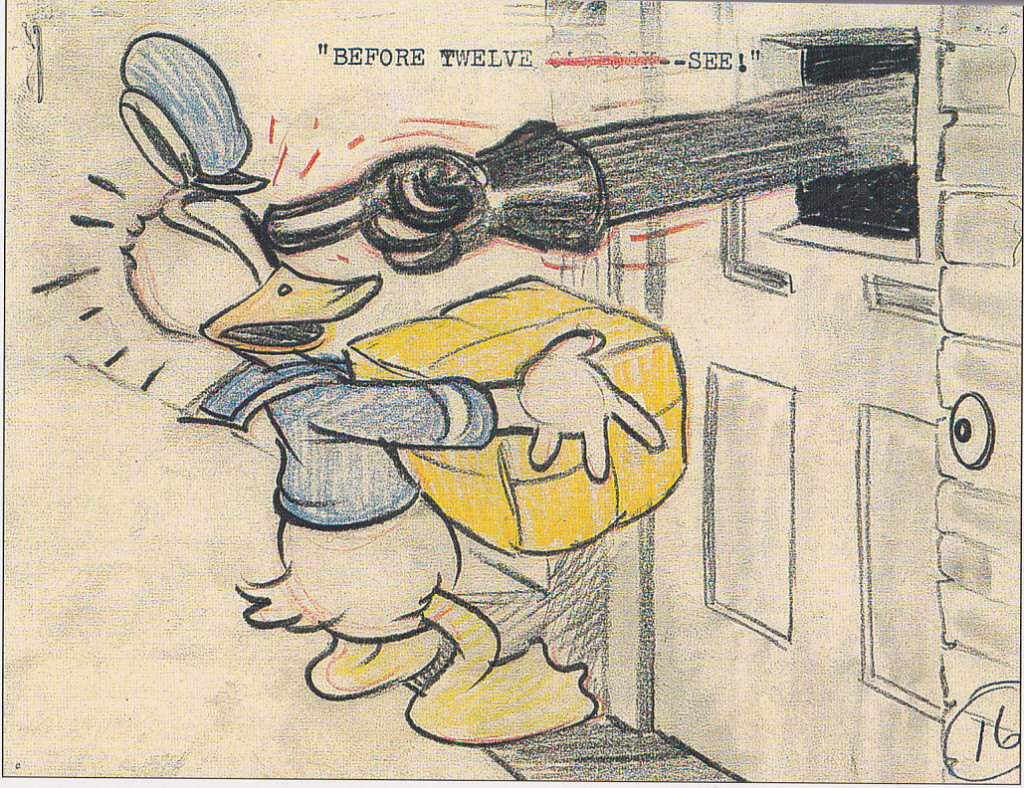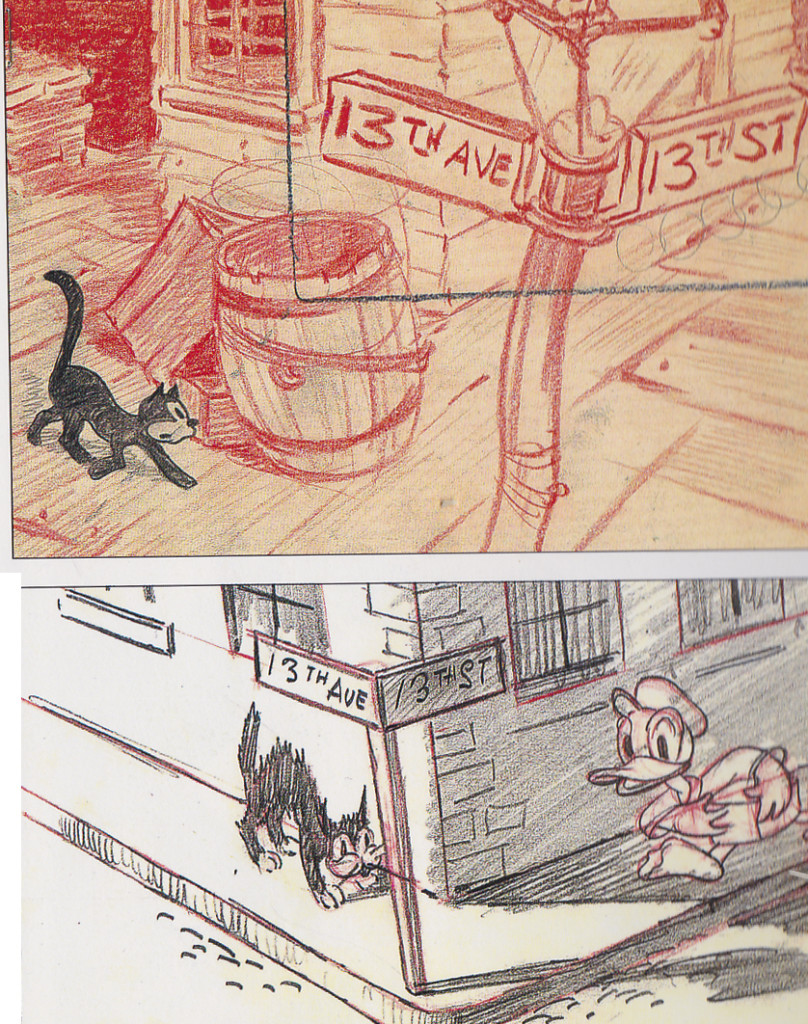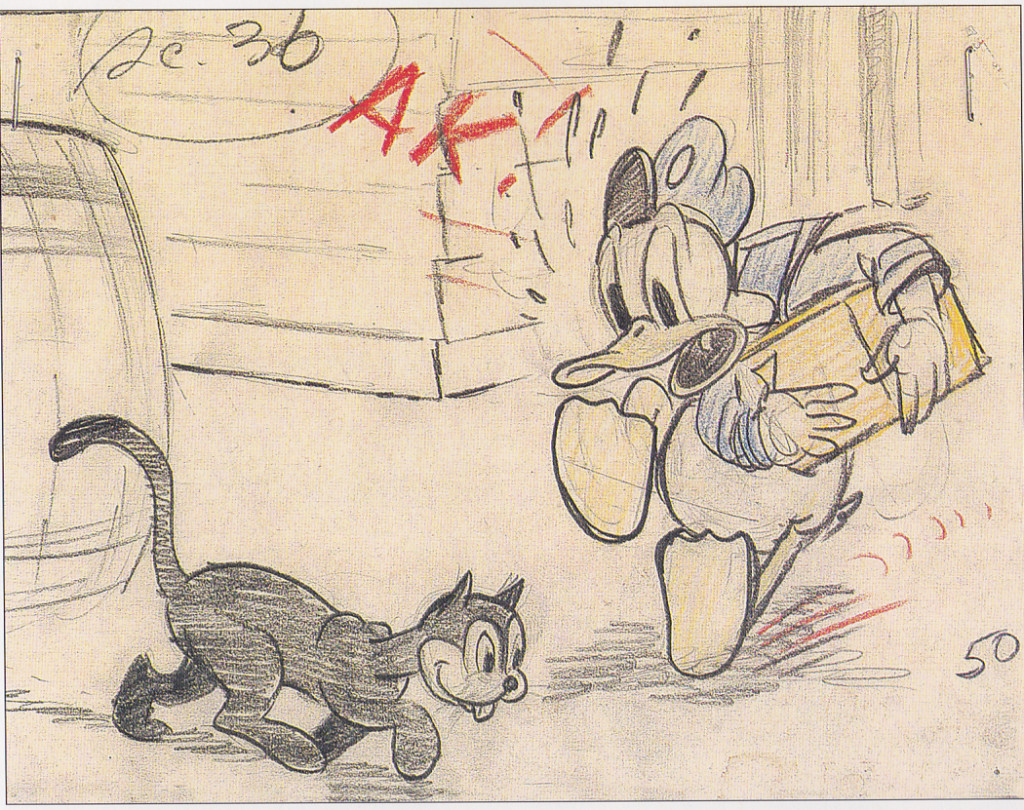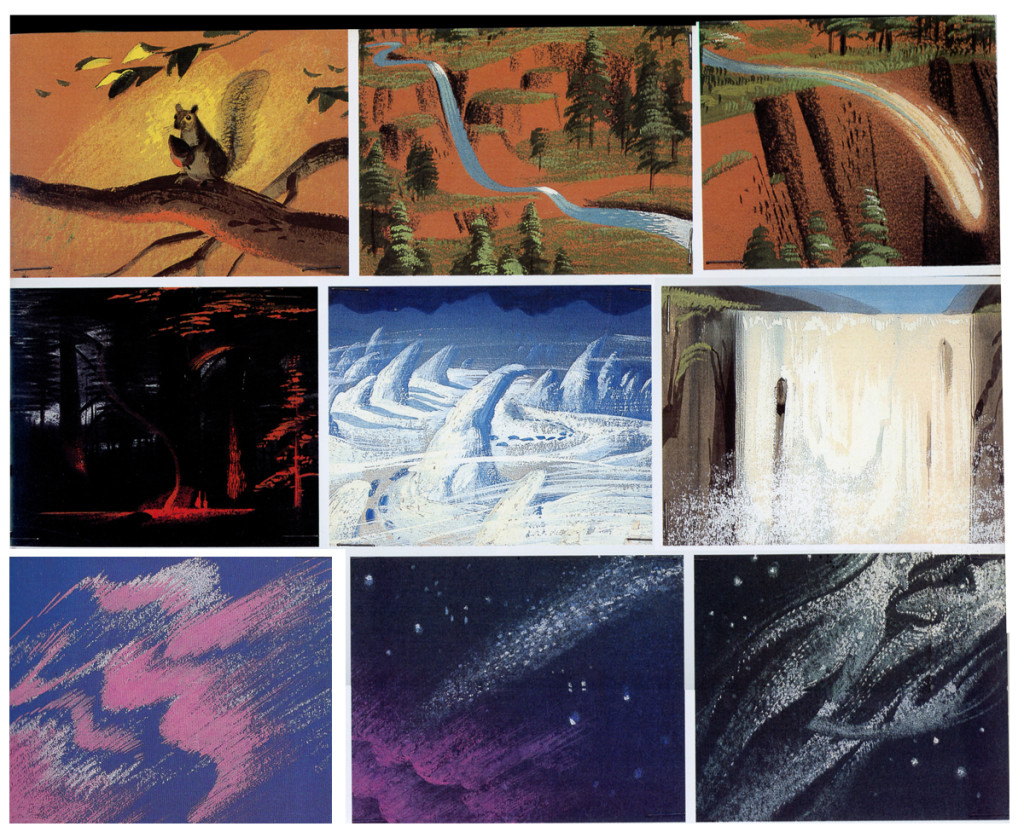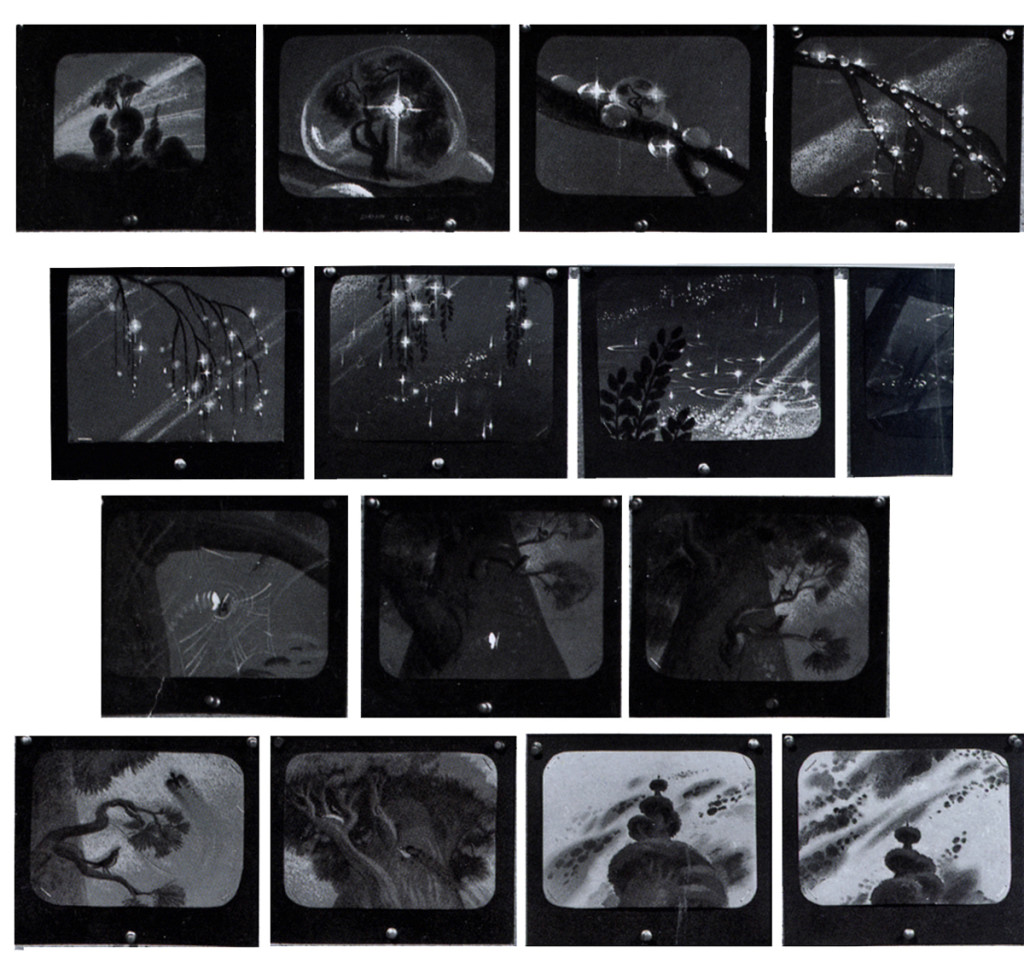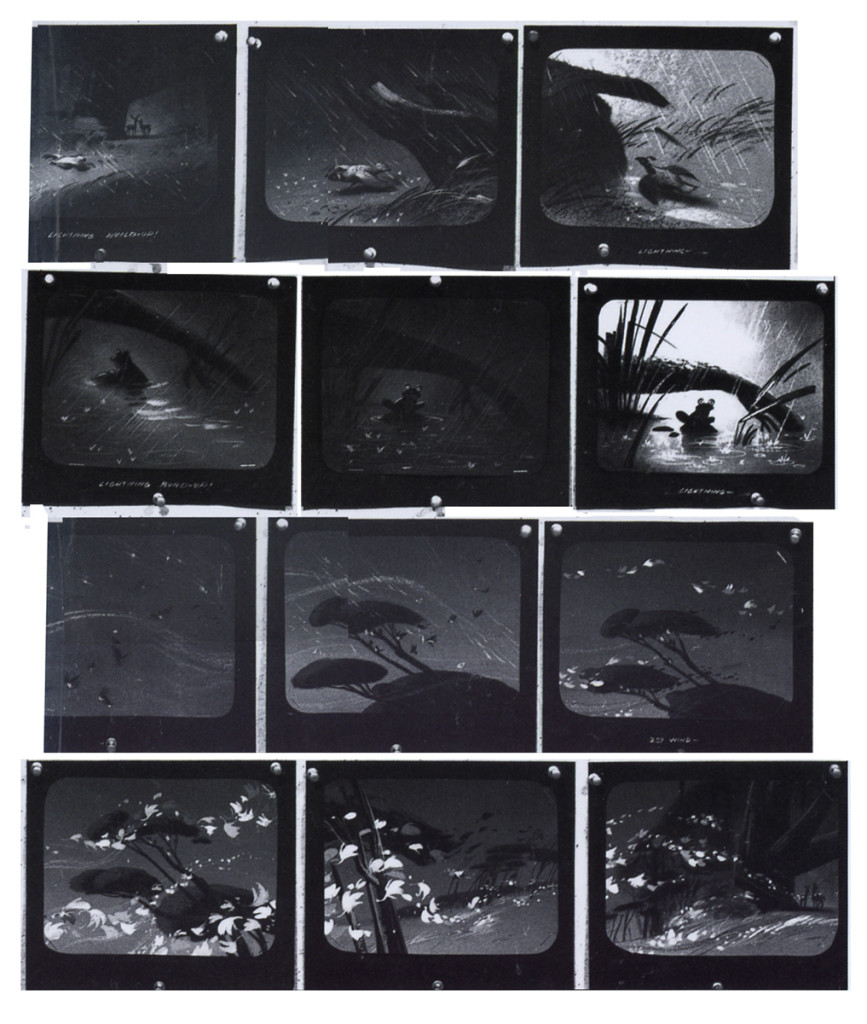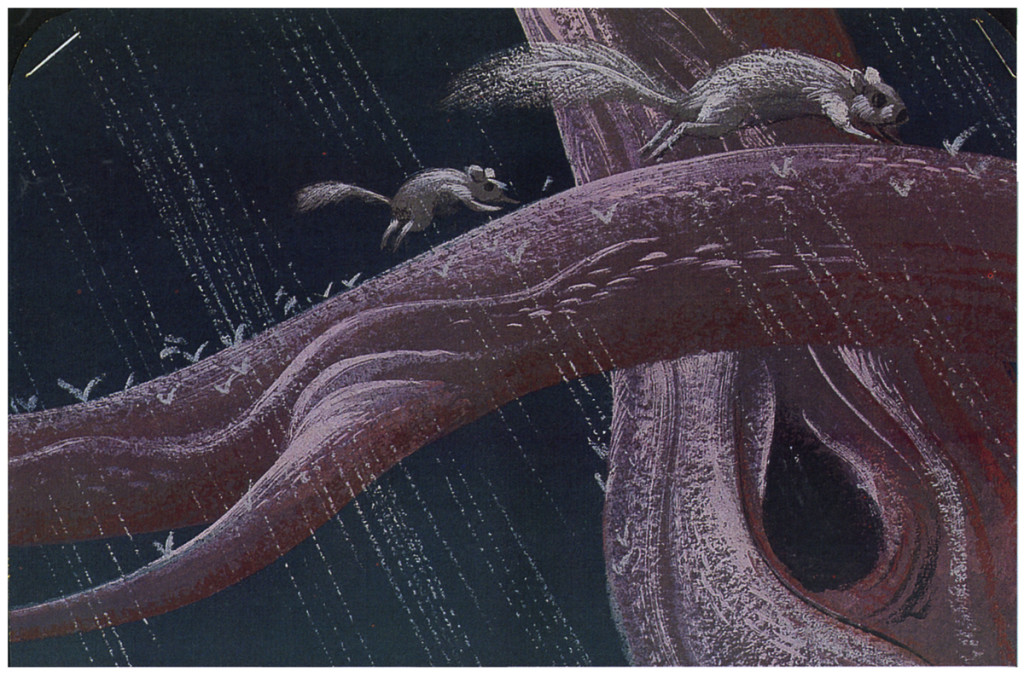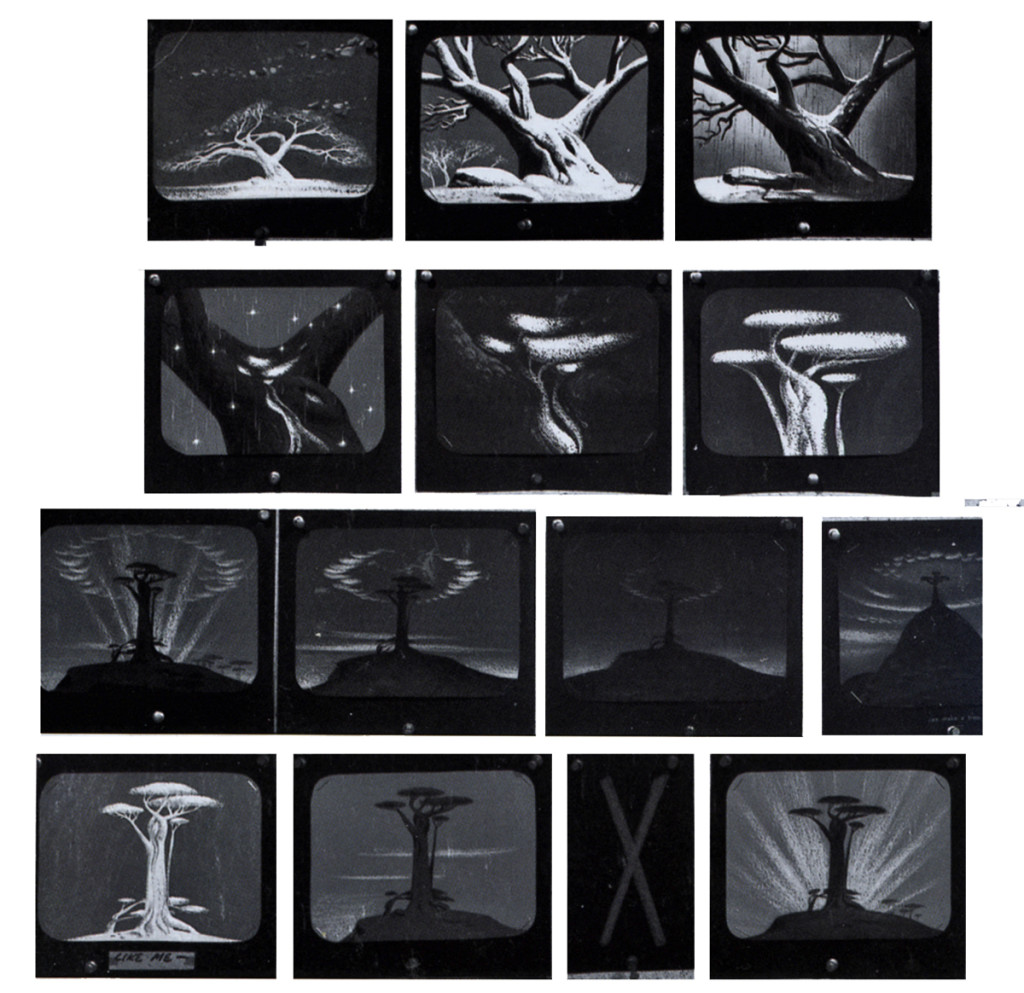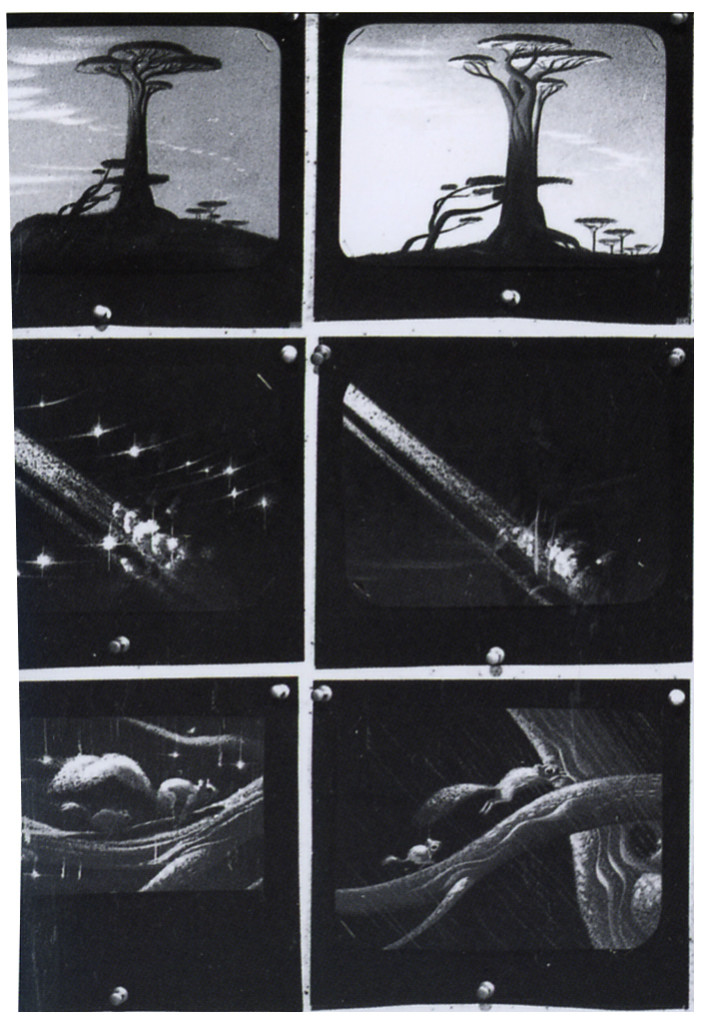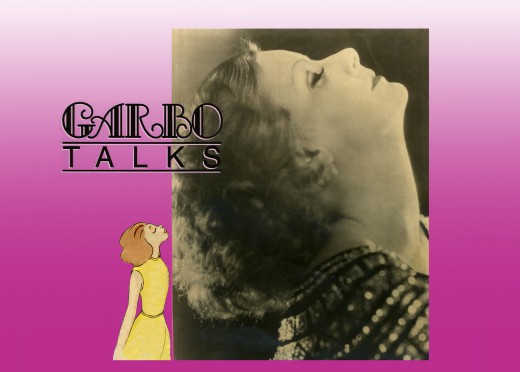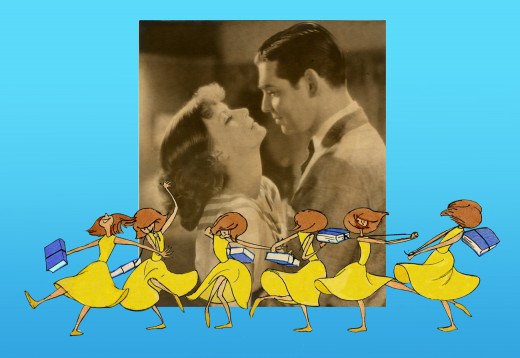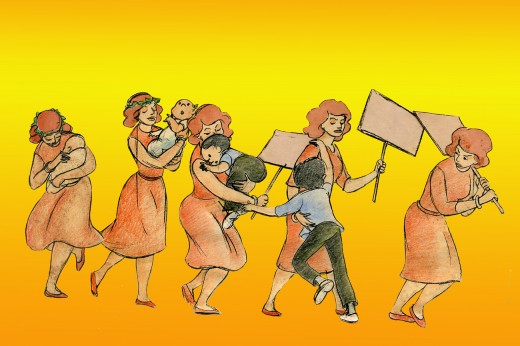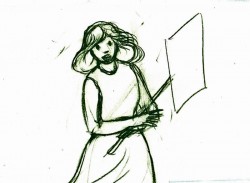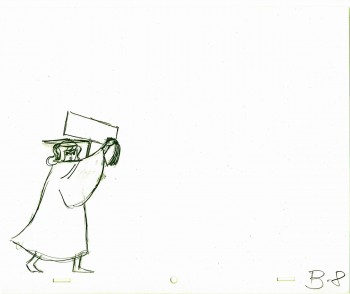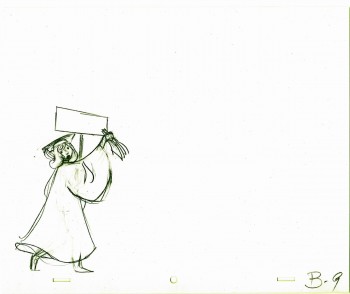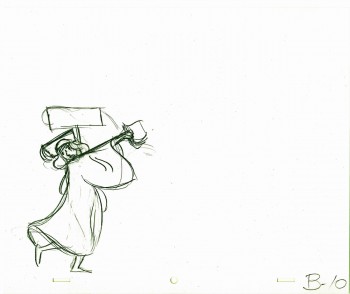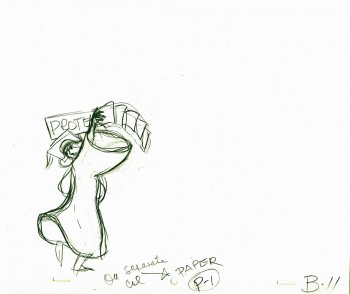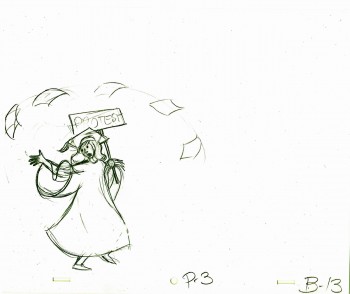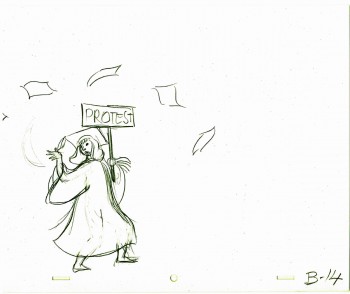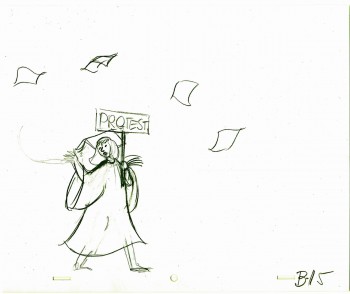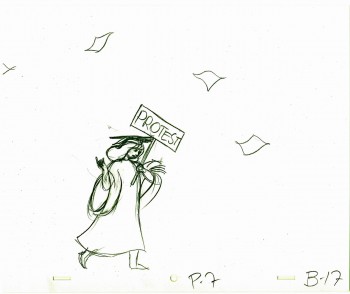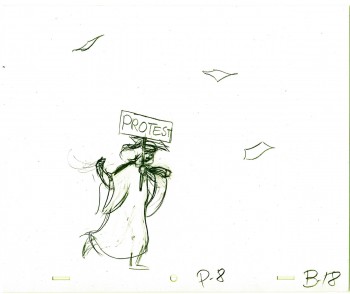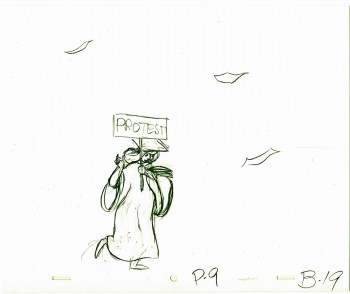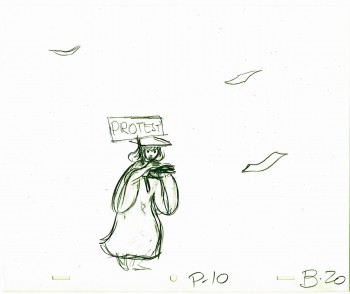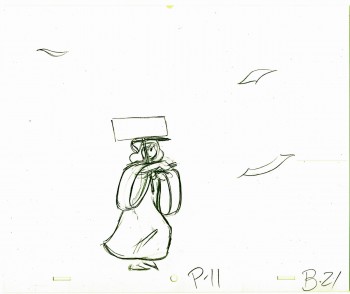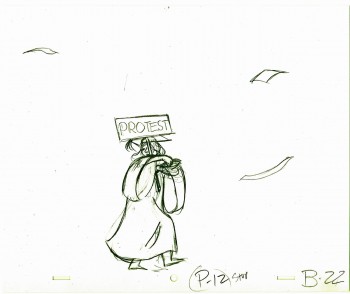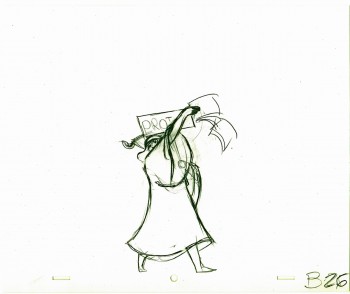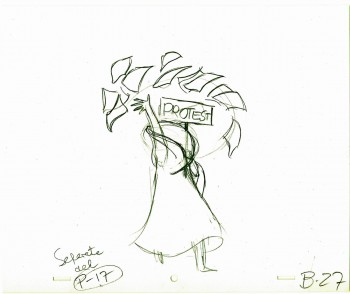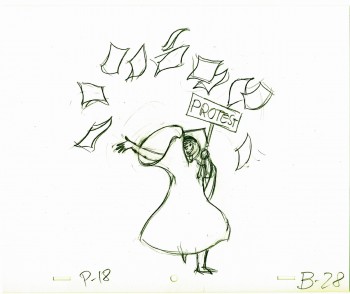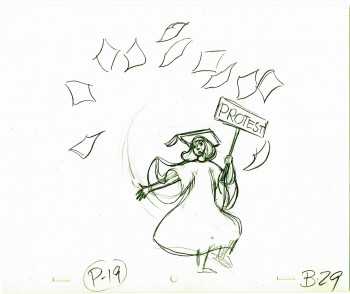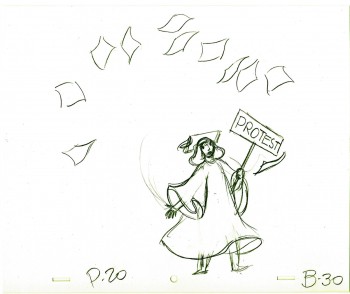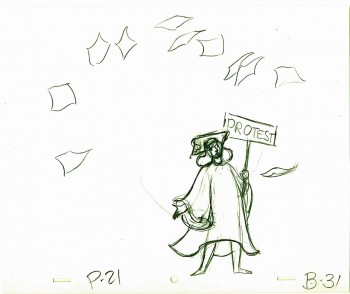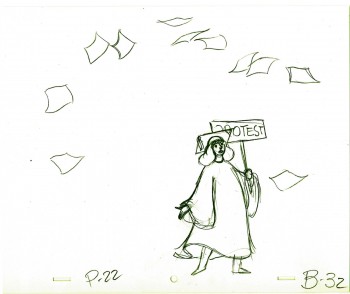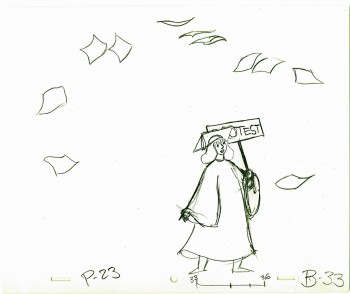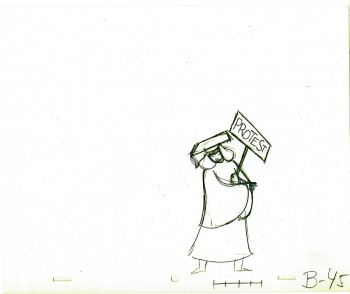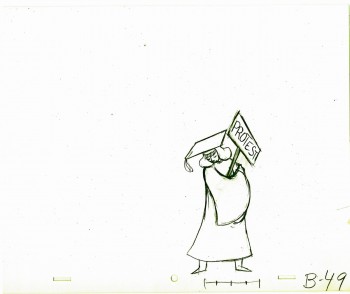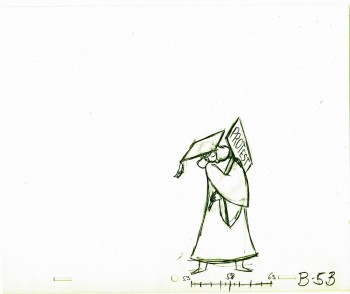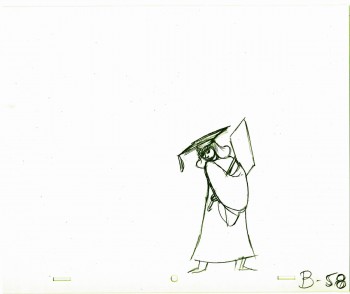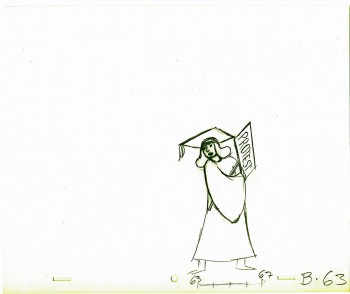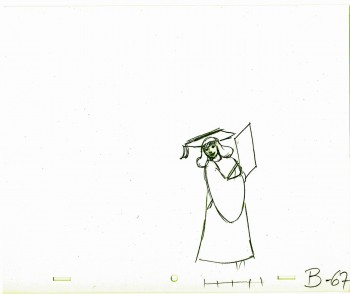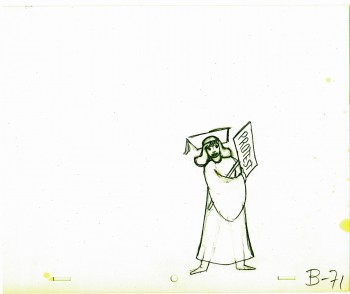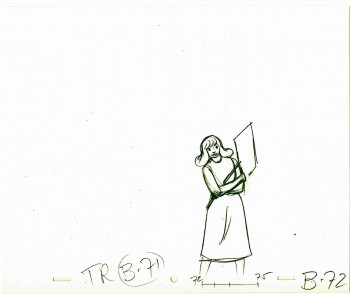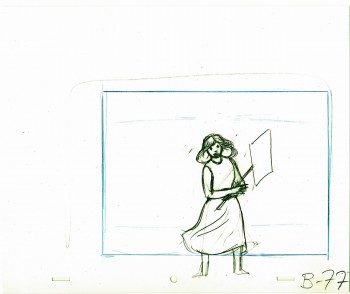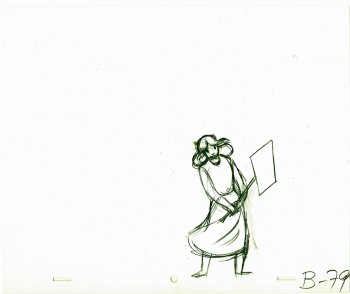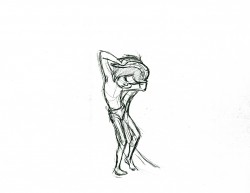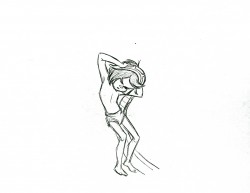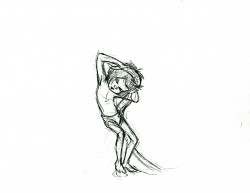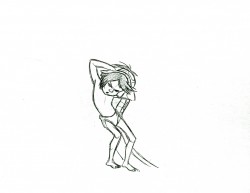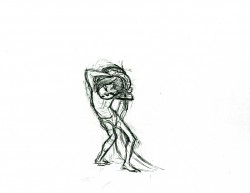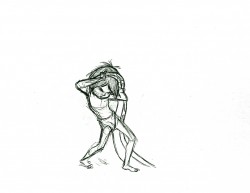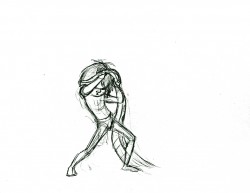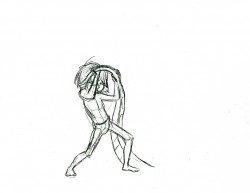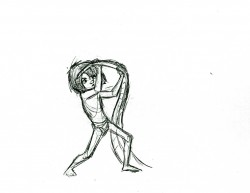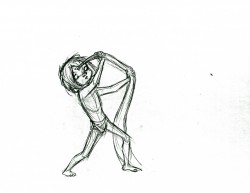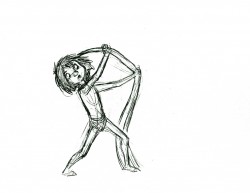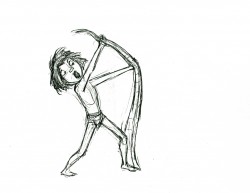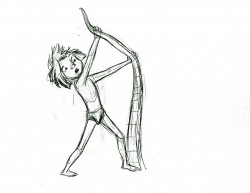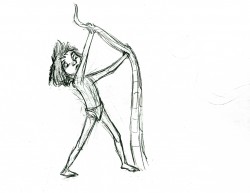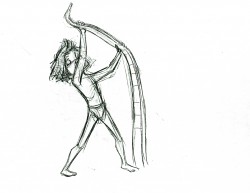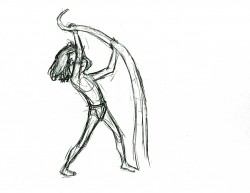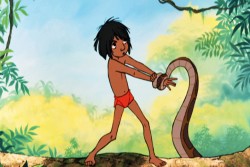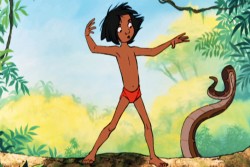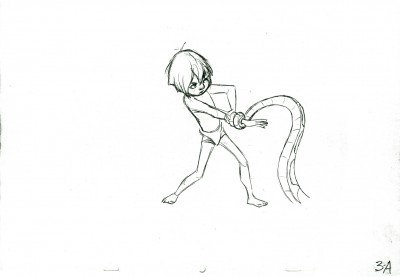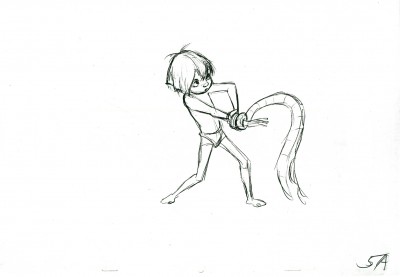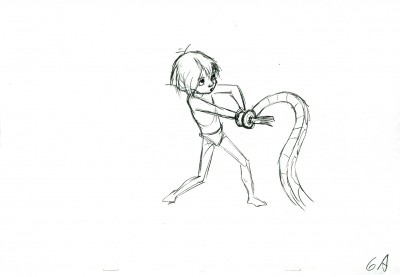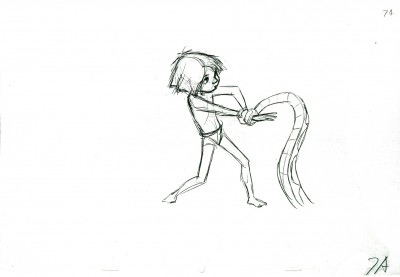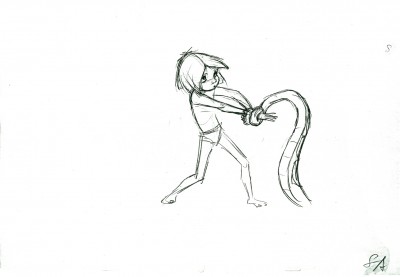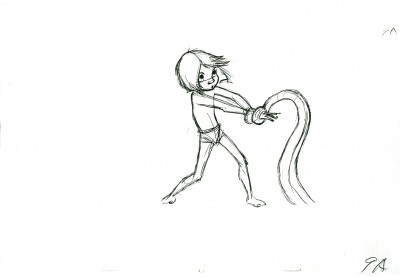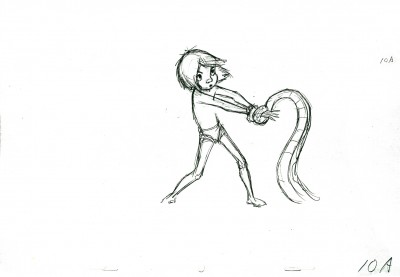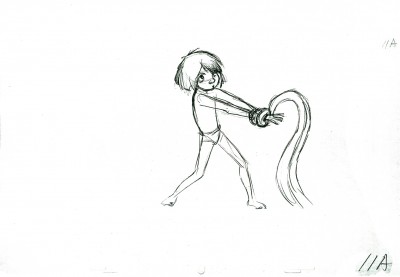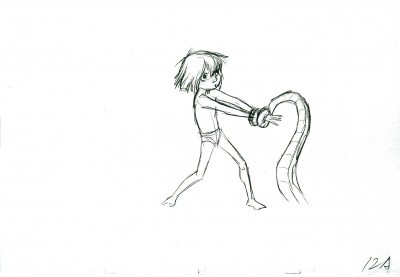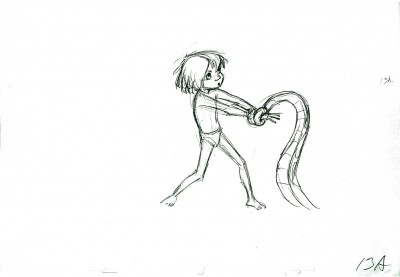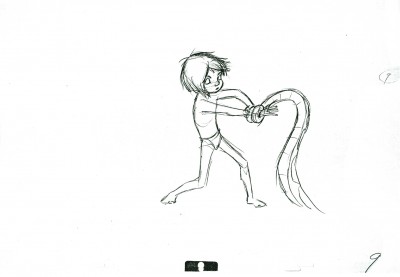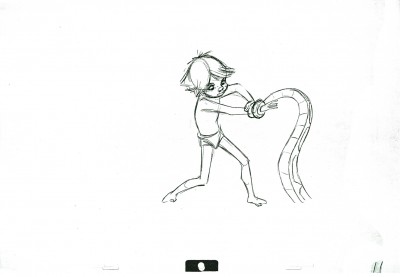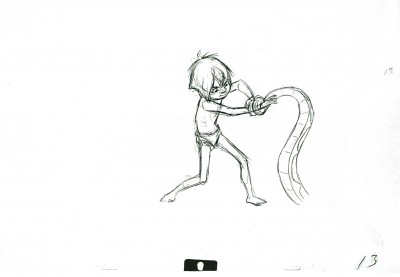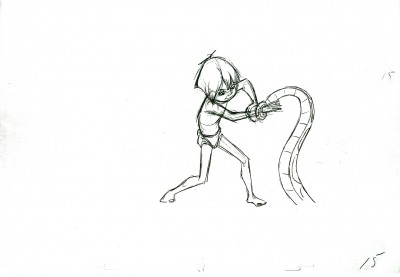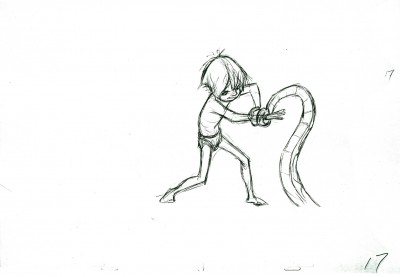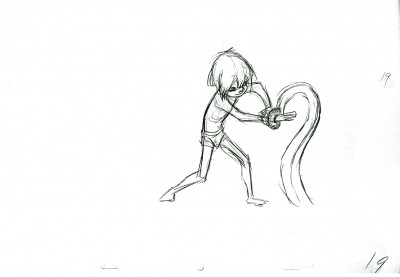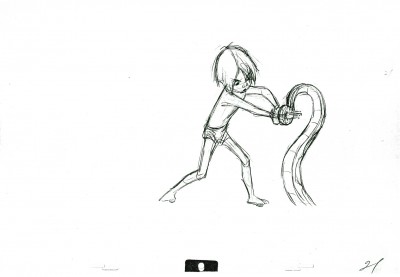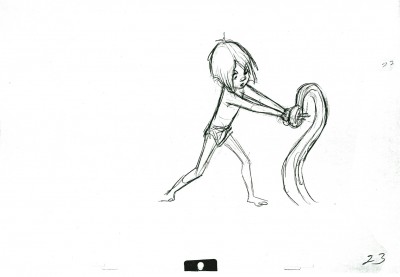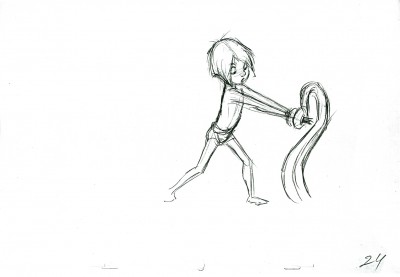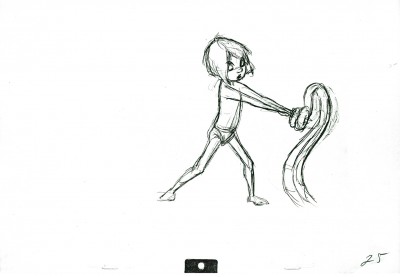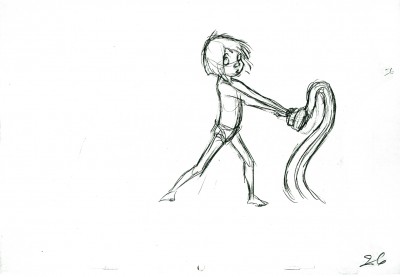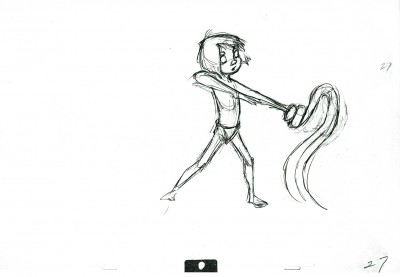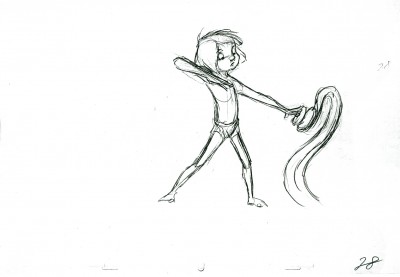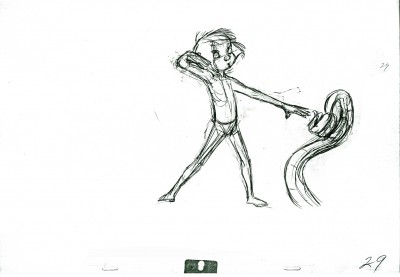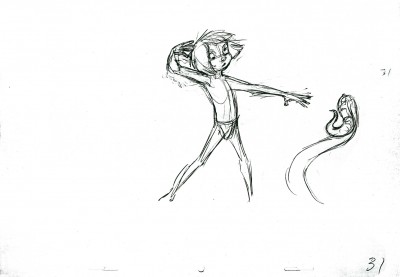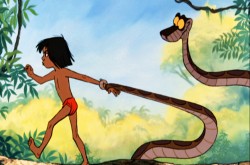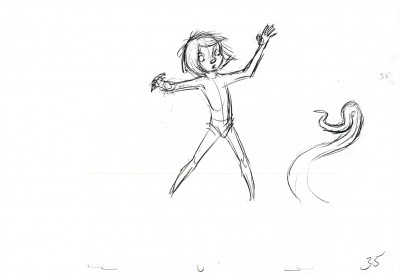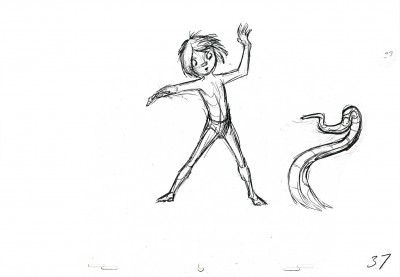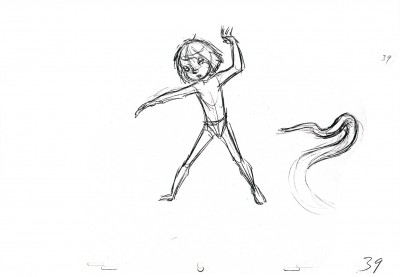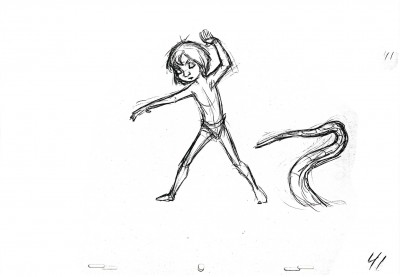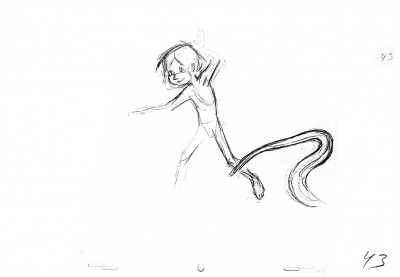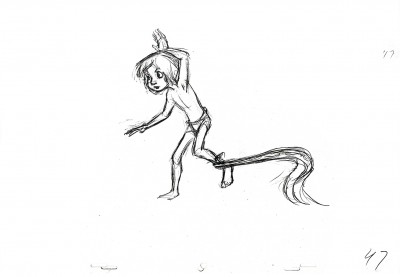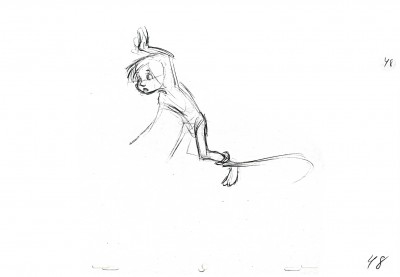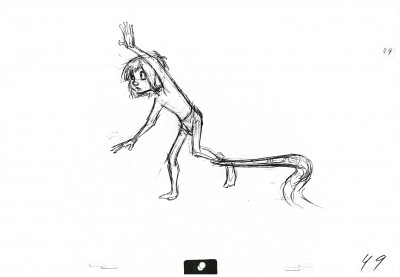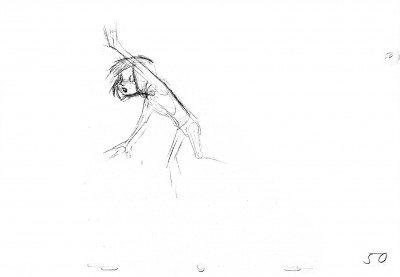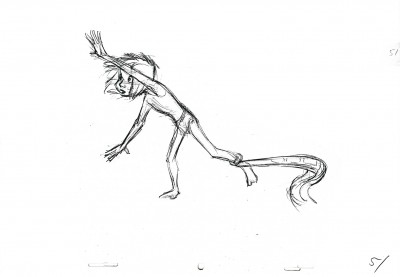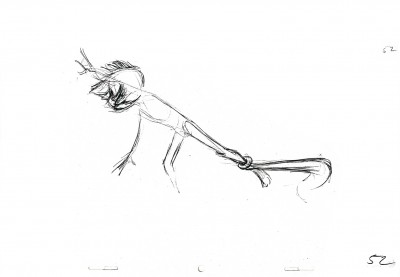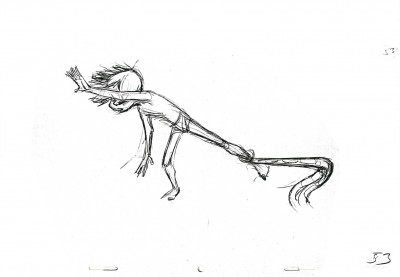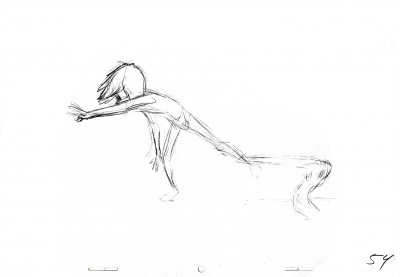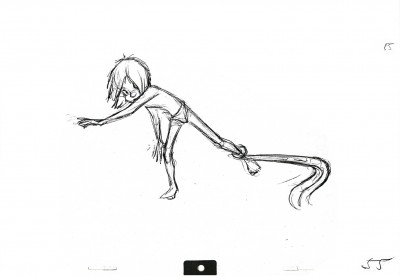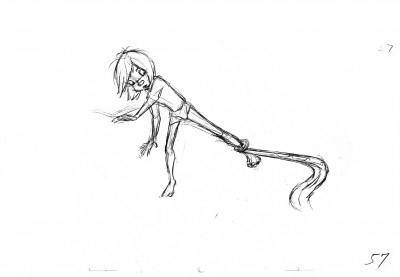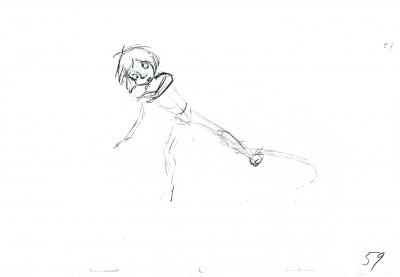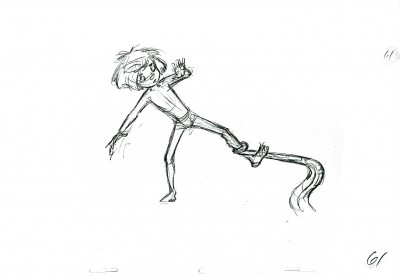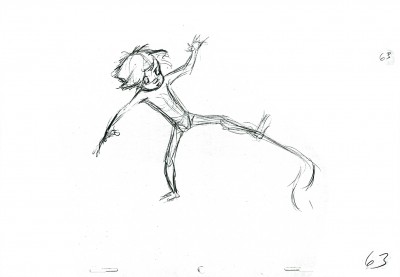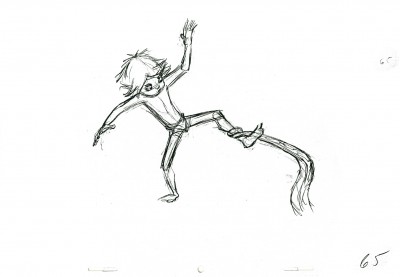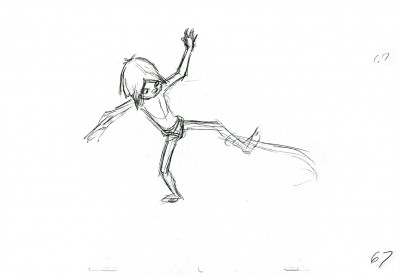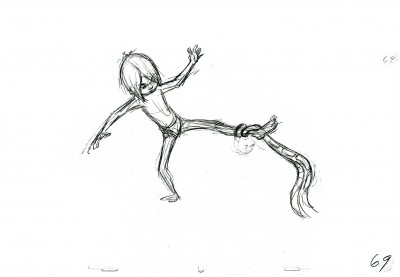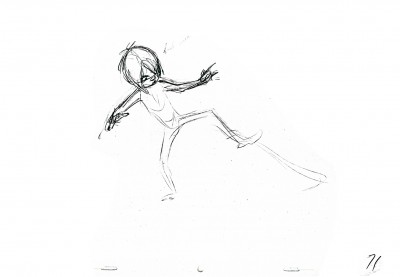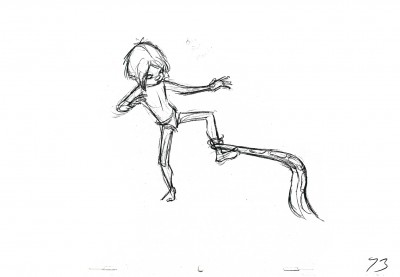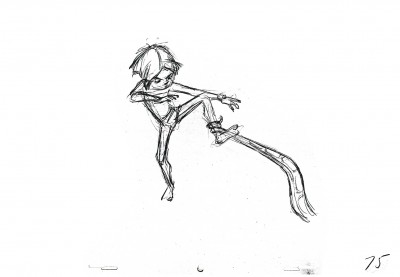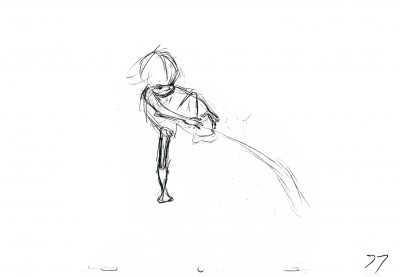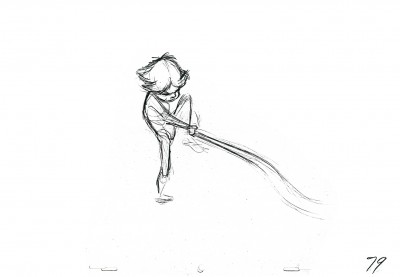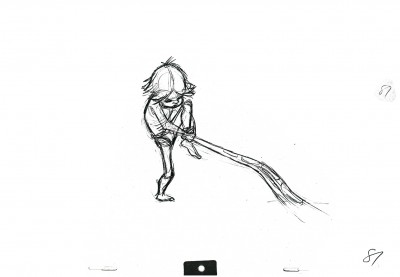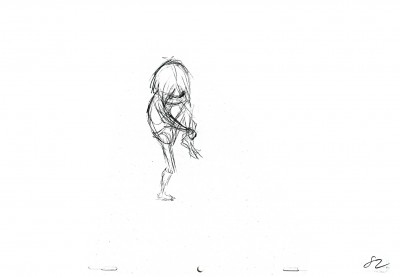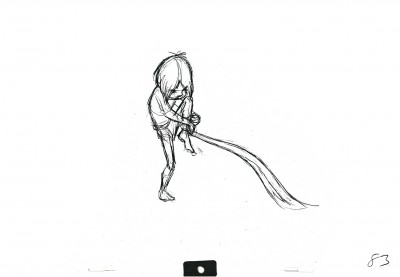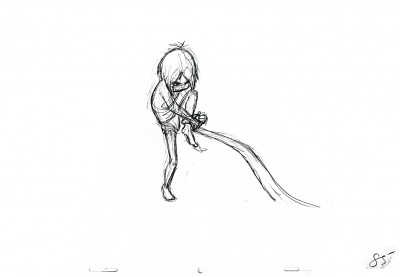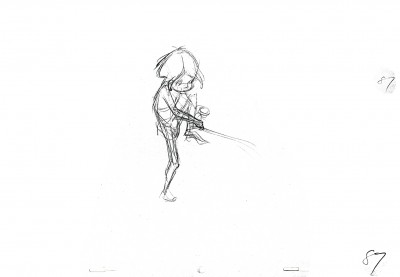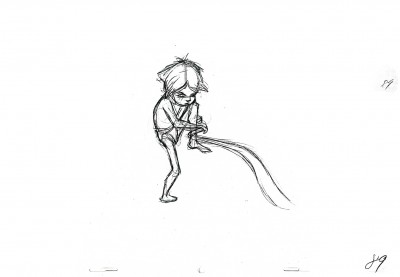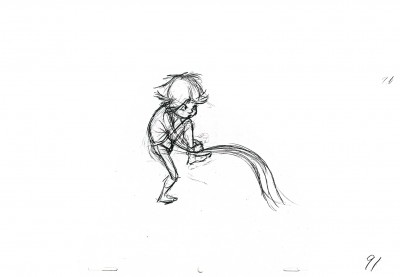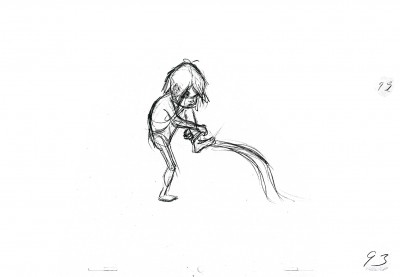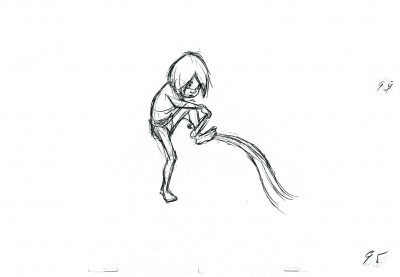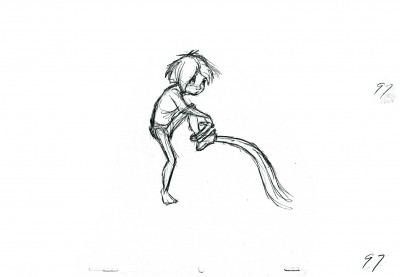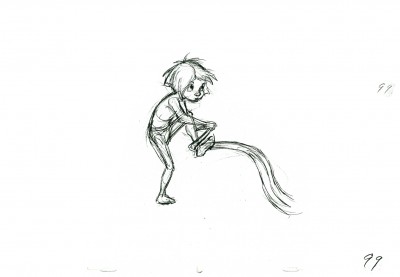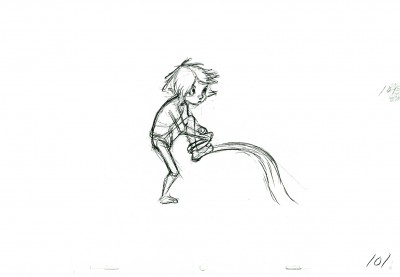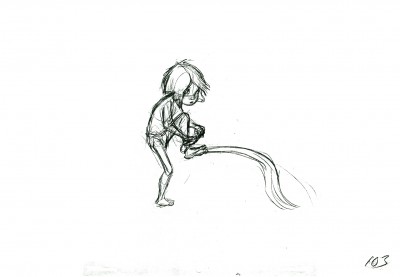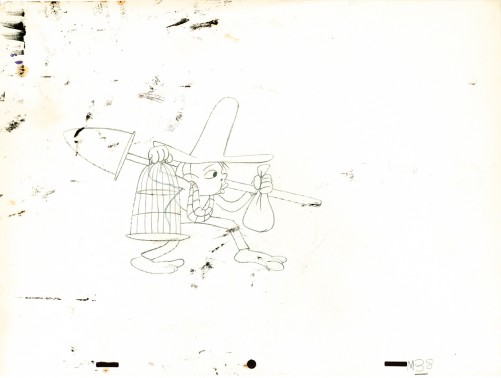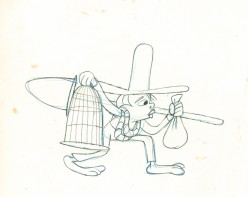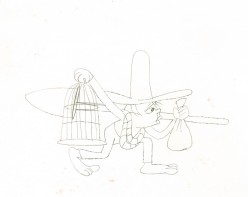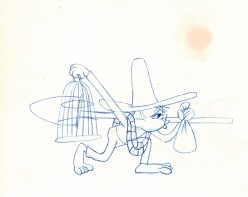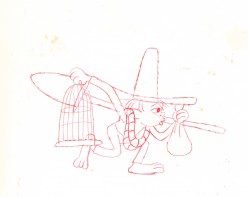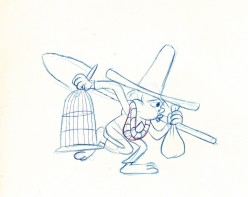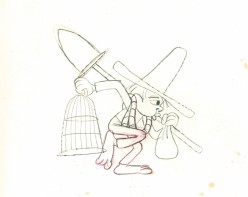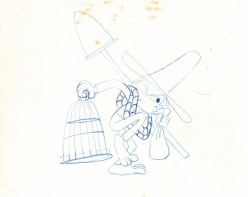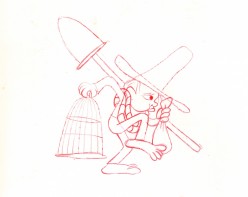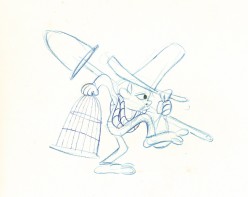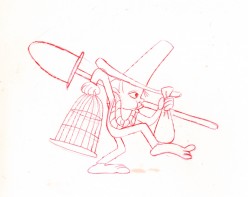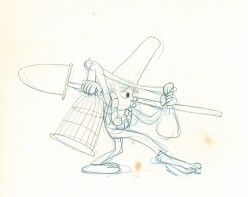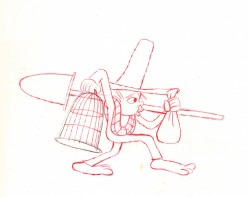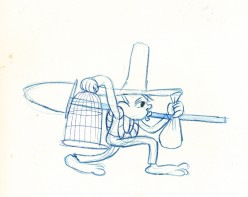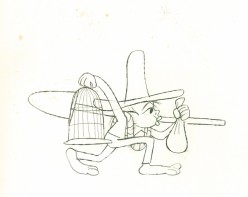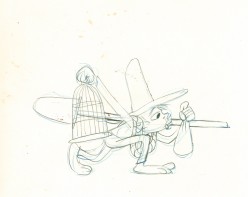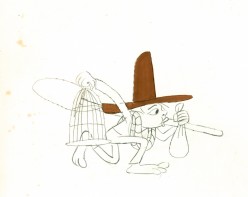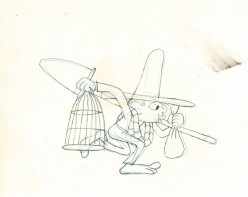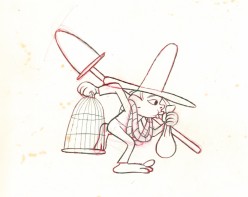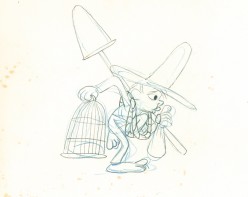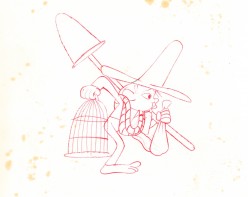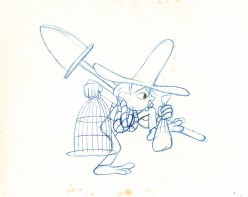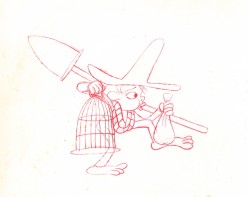Category ArchiveAnimation Artifacts
Animation Artifacts &Books &John Canemaker 08 Oct 2013 02:17 pm
a Coupla Board Gag-stas
Aside from formulating the inventors of the storyboard for animation, the Disney studio had some amazing talent in their group of “funnymen.” Most of the “gag writers” that took over the animation industry, came 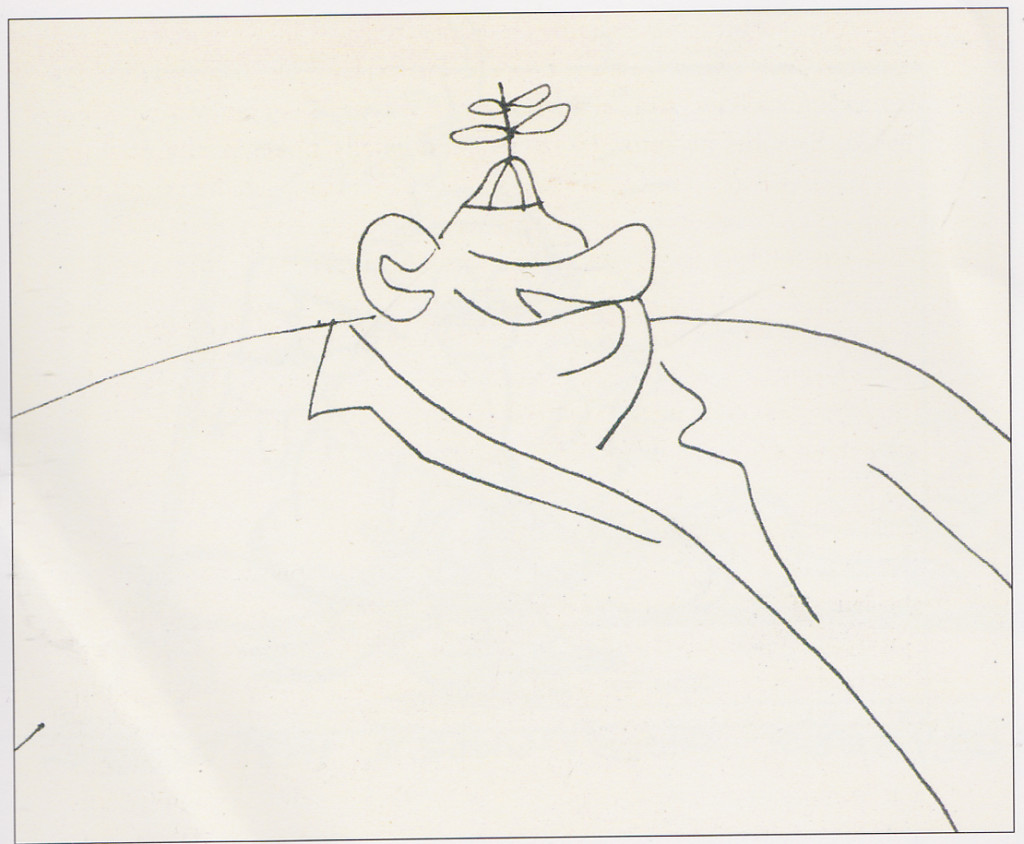 fresh from the Disney Bros. studio. You can start with Dick Huemer who virtually invented the form. There was Tedd Pierce who brought his own style and a rich sense of humor. Between him and Bill Peet there were a wild row of styles and intelligence from the Urbane to the Hayseed.
fresh from the Disney Bros. studio. You can start with Dick Huemer who virtually invented the form. There was Tedd Pierce who brought his own style and a rich sense of humor. Between him and Bill Peet there were a wild row of styles and intelligence from the Urbane to the Hayseed.
Here I’d like to show two of the richest and most colorful artists.
First we have one of the better “dwarf” writers – Roy Williams, Many of us know him as the oversized and goofy “Mousketeer,” Uncle Roy. This is a small piece done for Snow White, trying to get a gag out while giving some personality to Dopey.
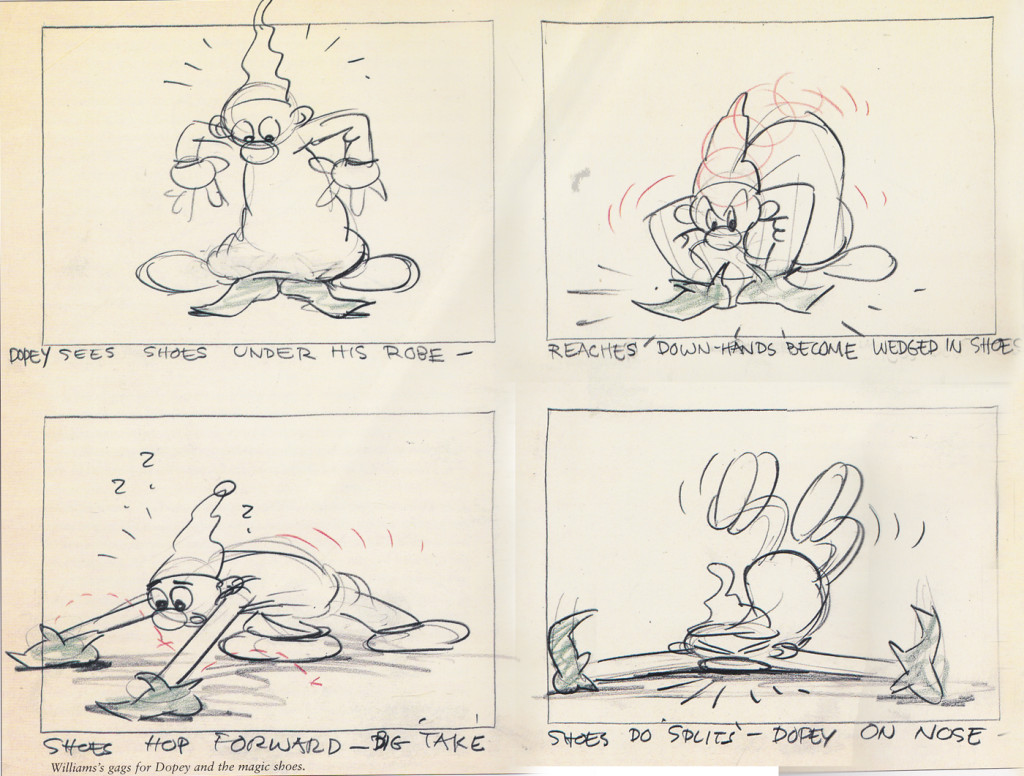 1
1
From “Unca Roy,” we can go to one of the most identifiable artists from the studio. Just take a look at the last two images posted here. If you don’t recognize the gag as one from the pen of foremost Donald cartoonist, Carl Barks. If not for some of the gags, here, the drawing style is dead giveaway. One can only sit back gawking at how great it is.
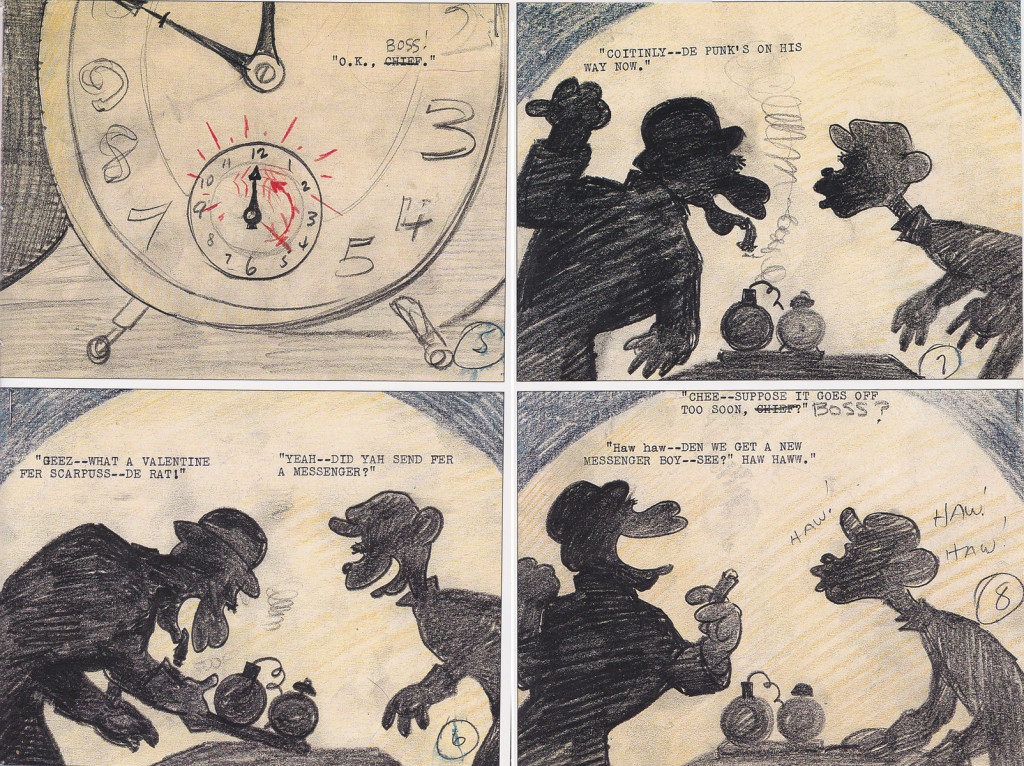
I will show off the work of a couple more of these great artists before I’m done. They keep me laughing all the while admiring them.
All material thanks to John Canemaker whose brilliant book, Paper Dreams, supplied just about everything for this post.
Animation Artifacts &Articles on Animation &Books &Commentary 23 Sep 2013 08:00 am
Heading Toward WB
Maurice Noble began his art career at Chouinard’s Art Institute. He and Mary Robinson (Blair) followed similar paths at the school. They both moved on to jobs decorating windows of Robinson’s Department Store. Their design styles were in no way similar, but their approaches to the art were. This was during the Great Depression, and there was no chance of getting a raise of salary there to match what ould be earned at Disney, They both moved on to working at Disney’s Studio.
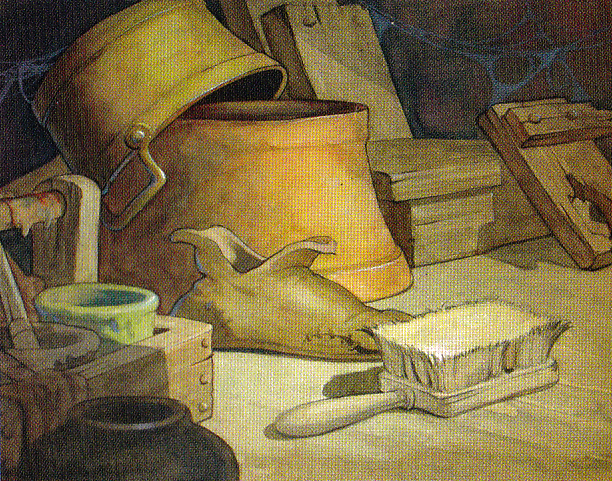 His first assignments were in painting backgrounds for some Silly Symphony cartoons such as Elmer Elephant, Water Babies, The Old Mill and The Country Cousin. All of these were “A” list Symphonies and were certainly plumb assignments within the studio, yet it took Maurice a short bit of time to appreciate the move he’d made toward animation. He soon found himself painting backgrounds on Snow White and designing on Bambi, Pinocchio, Fantasia and Dumbo. On Dumbo he helped to design the Pink Elephants sequence. He developed his personal approach to animation design.
His first assignments were in painting backgrounds for some Silly Symphony cartoons such as Elmer Elephant, Water Babies, The Old Mill and The Country Cousin. All of these were “A” list Symphonies and were certainly plumb assignments within the studio, yet it took Maurice a short bit of time to appreciate the move he’d made toward animation. He soon found himself painting backgrounds on Snow White and designing on Bambi, Pinocchio, Fantasia and Dumbo. On Dumbo he helped to design the Pink Elephants sequence. He developed his personal approach to animation design.
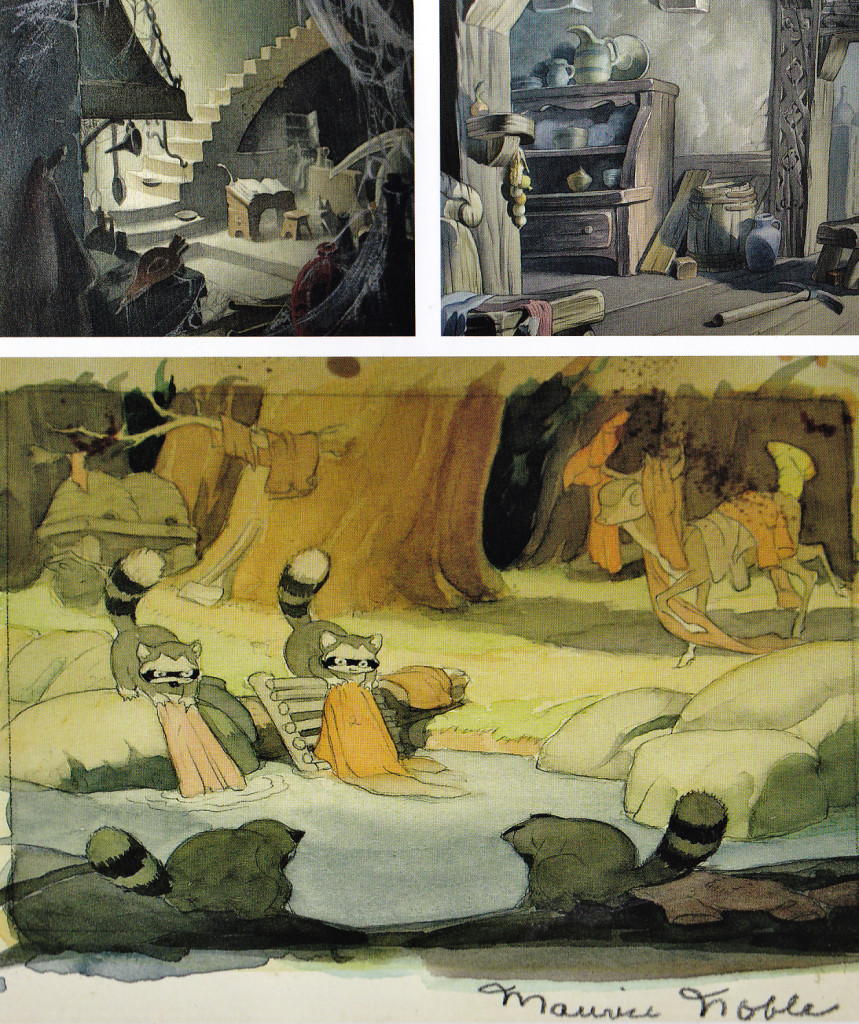
Selected art by Noble from Snow White
There was also a legendary screening, set up by Frank Lloyd Wright, attended by many at the Disney design group, of a Russian animated film called The Tale of Czar Durandai. This 1934 short film was directed by the famous Ivan Vanov-Vano. John Hubley also used thisfilm as an example of inspirational work for the animation he was to do.
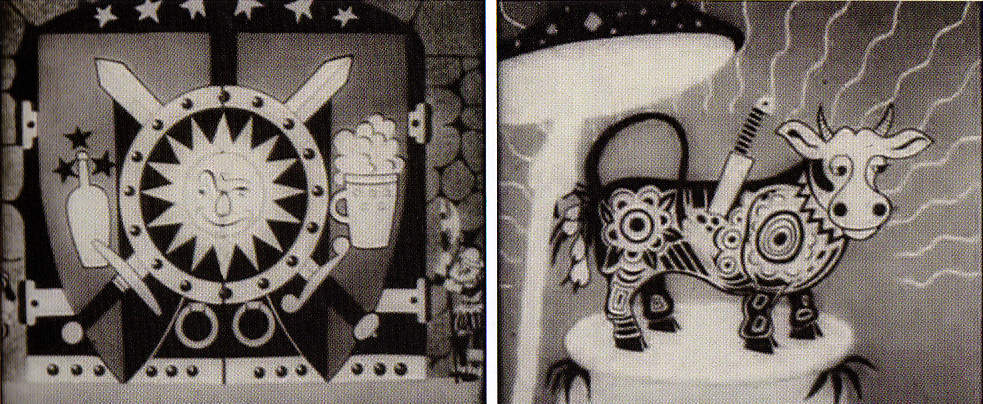
The Tale of Czar Durandel
Maurice Noble had also participated in the strike at Disney’s. When it was over, he was given a second-rate office, and it was obvious he was no longer in high demand at the Studio. He sat doing nothing for quite some time before receiving severance pay. He then joined the Signal Corps to work for the Army. The aggregation of artists who had joined the group was a top-notch selection of excellent designers all of whom were committed to 20th Century Art in animation. Animation had joined the Modernist movement, and was on its way to producing “adult” fare.
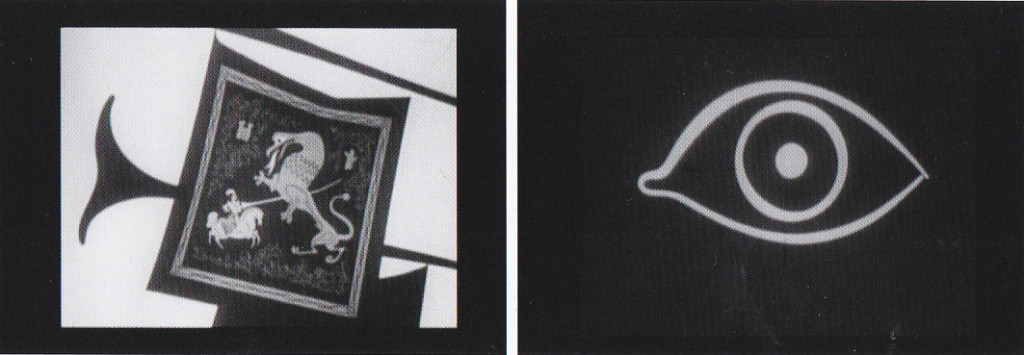
A Few Quick Facts About Fear was a short produced/directed by Zach Schwartz
which took complete use of the new approach to artwork in animation.
Noble worked with Zach Schwartz on a film which led the way to the new approach to animation art. The film was done purposefully in B&W using a bold approach to the art.
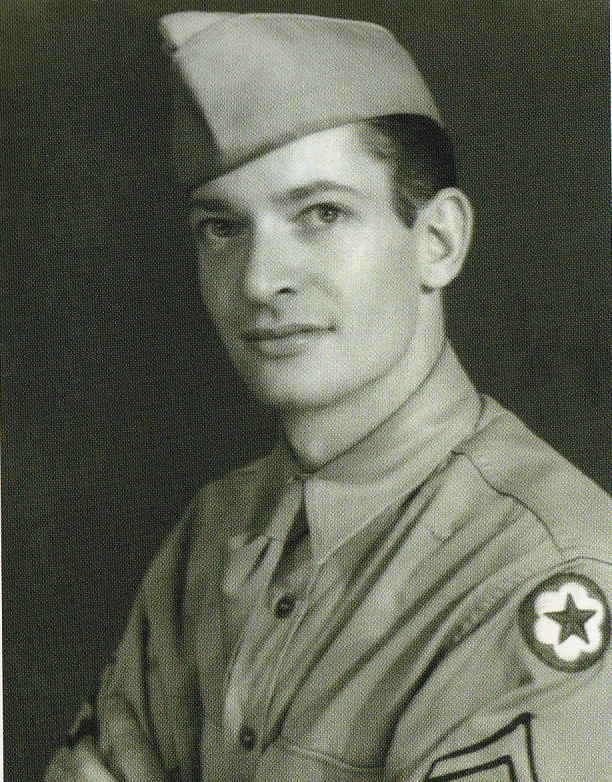
Maurice Noble in the SignalCorps.
Animation &Animation Artifacts &Art Art &Miyazaki 04 Sep 2013 07:05 pm
Holes
We’re still in a fight-down with Verizon and our work isn’t getting there. Hopefully it’ll finally be resolved by Friaday, so don’t be wurprised is anoternpost is missing.
It was good to read Mark Mayerson’s article on Monday night. I was sure Hayao Miyazaki was planning to retire, so it felt positive knowing what was to happen. After the last few threats, it was somewhat expected. He did everything he could to line up Goro, his son, to take charge of one wing of the films in production. Now he can entertain the idea of running the studio’s production.
Given that The Wind Rising, Hayao’s most recent film, is doing well on the Festival circuit, the elder Miyazaki can go out with å bÃ¥ng. The film’s also reaped very high grosses within Japan and seems †o be doing well at the Box Office,
The hard part is actually knowing he won’t do more films. When you have someone of his caliber consistently turning out special work, it’s a shame to see that product get lost.
Mark Mayerson had a nice analogy comparing John FOrd to animation. Once such a master stops working the vacuum left behind them is enormous. A space is left open, missing and ¨if left open and not-filled it surely becomes a hole in †he arc of the medium, it’s noticeably missing.
There’s certainly nothing in the world of cgi feature animation that compares. Everything on the market in the last year was so wholly vapid
we can only hope a surprise will take over for the younger artists and give a direction forward. Miyazaki will be missed in the world – he already is. There will be no other like him. At least we know he’s alive and kicking so we can aontinue to honor him and his creatopns.
Animation &Animation Artifacts &Commentary &Illustration &Independent Animation 31 Aug 2013 08:27 am
Getting Old
You see the problem is that when you get older, priorities change. Take a look at Mike Barrier‘s blog. He knows what’s important amd surely it’s the ghsts of the past. Yes, we want to know who did what and when and where, and we move heaven and earth to get that part right. For the most part it is.
Then you have to look for and preserve those beautiful drawings of our youth. We get all the help we can, and we get it right. But there’s still so damned much work to do.
I’ve been digging into the archives, and lord knows most people aren’t ready to admit they’ve already viewed these drawings a half dozen times before. It’s not like saving Savannah or moving some extraordinary pictures. So they were moved on, then 0n again, before being devoured,
I love this work; I love animating it even more. When some semblance of life shows up in those drawings.
Getting older means it’s harder to get the point across. The message engines more seriously, and people all about watch for the brim of your head. They want to see you, too, so you’re on display like as not. The cartoon you planned has turned into some kind of “Art” and you try harder.
Then you really get tired. But you go on,god bless you. You try hard.
Animation &Animation Artifacts 28 Aug 2013 06:14 am
Only God Can Make a Tree
Given the holiday celebration of Martin Luther Kings’ elloquent statement re this subject, I’ve opted to post these images from Dick Kelsey. Richard Kelsey was one of those visual poets of the Disney studio. He’d probably have been the only one who could successfully tackle Joyce Kilmer‘s poem, Trees. He also brought Hiawatha to life with his strong beautiful watercolor and in sketches. (Needless to say, the sketches of one film often end up mixed in with the Hiawatha pictures.) Unfortunately, the film never completed production. We ;sten to third rate rate newcsasters give thier own fourth rate unditry of the day. Ricard Kelsey couldn’t offer much better than these images.
Trees was a seqment of the 1948 package film, Melody Time and blended in with a never-completed piece based on Longfellow’s poem. Hiawatha was never complete but was an amazing gift for sore eyes.
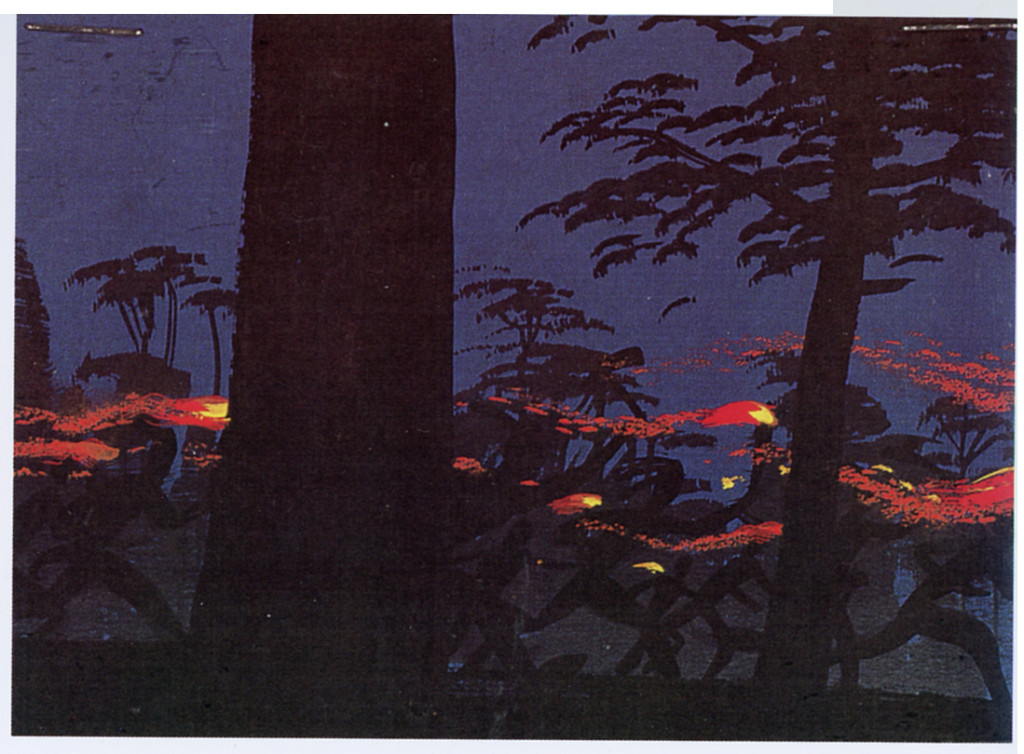
The art in these two pieces is often as touching as Eyvind Earle‘s majestic work for Sleeping Beauty. You can see how some slight grace and a more assured pen would have brought the backgrounds to Pocahontas closer to Sleeping Beauty.
They certainly had artists of character working for Disney back then (as do they do today; it’s just that today everyone seems to smell of fear. You also have to know how to keep the beauty of the art from dissipating after a few shallow and solo comments.
Animation &Animation Artifacts &Commentary &commercial animation &SpornFilms &Tissa David 26 Aug 2013 08:54 am
Garbo Talks through Tissa’s Drawings
To celebrate Tissa David‘s last days, Ive chosen this title sequence she did for Garbo Talks. Her anmation is beautiful for it, and I enjoy looking at the film which has yet to be released on DVD.
The initial rough/cut screening for Garbo Talks was a bit peculiar. I sat down and a woman sat next to me; I sort of recognized her. We said hello when she sat down. Somewhere midway during the film I realized who the woman was – Betty Comden, that half of the Comden & Green writing team. I realized she was playing the part of the older Greta Garbo in the film, without receiving credit. It was brilliant casting, but you could say that about all of Sidney Lumet’s movies.
When I left the screening room there was a tense meeting going on with four people. I caught Sidney’s eye and waved goodbye. Going down in the elevator Burtt Harris, the producer, rushed in as the doors were closing. He asked what I thought of the film. Before I answered he said it wasn’t working, and Elliott Kastner and MGM weren’t very happy. A rough conversation in an elevator.
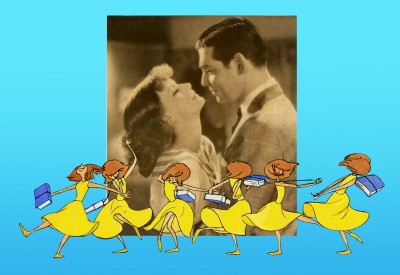
The next day, Sidney asked what I thought of the film, I said that I felt we didn’t know enough of the back story of the Ann Bancroft character in the film. I suggested that I try to offer this in the opening credit sequence. Sidney loved the idea. He just made me promise that it wouldn’t feel like the credits to “I Love Lucy” or “I Dream of Jeannie.”
During the mix, we were talking about the music for Garbo Talks when we slipped off into discussing the music for some of Sidney’s other films. I told him that the music by Richard Rodney Bennet for Murder on the Orient Express was one of the most brilliant film scores ever done. Sidney hesitated in responding finally saying he didn’t get it at first, and it took a while for him to appreciate the music for that film. Sidney wasn’t always perfect in selecting a composer for his films, although I do think that Johnny Mandel was a great choice for him on Deathtrap and The Verdict (or any film, actually).
Bob James had scored Garbo Talks. (He is an eminent jazz pianist, whose most famous piece is probably the theme to the tv show, Taxi.) Bob and I had to work together very closely. He wrote the score to the animatic I’d given him and would build the rest of the film’s score from that. He hit many of the actions in that opening title, and Tissa David‘s animation hit them all. There was a very tight sync between music and title animation.
The preview screening was held on Long Island. I drove there and met the group of Sidney, editors and MGM execs, including Elliott Kastner. He was the leading producer on the film. They weren’t happy at the end of the screening, and I was sure my titles were going to go. It took a week to hear that the titles were staying, but the score by Bob James was dropped. The composer took the hit, unfairly. A new score was being written by Cy Coleman. All that tight sync work!
Coleman wrote a lovely melody for the film, but just swept across the animation not hitting any points in particular. It’s taken me a long time, but I’ve come to like the music he wrote. Tissa wouldn’t watch the piece again with the new music.
In the film, the character played by Ann Bancroft has had a life that, in some small way, was shaped by Greta Garbo’s feature films. This is a small bit of backstory in the live action film, until the end.
For the credits, I chose to develop this aspect of her story, and Sidney agreed on the approach. We told her life in a caricature of Ann Bancroft‘s character, growing up. The sequence ends with her at her current age, an elderly woman, and the live action begins. Hence, we were giving the life story of the film’s lead character before the film started.
The idea was to use the device that had been developed for TV in the 50′s & 60′s of the caricatured characters whisking through the sitcom titles. (See Bewitched or The Carol Burnett Show.) However, it was our intent to treat it in a serious way.
Tissa David did a stunning, tour de force of a brilliant piece of animation. It was a dance that the character went through, and the credits played off the animation, which played off stills of Greta Garbo’s films.
There was a small crew on the piece, which ran about 2 ½ minutes. Tissa animated, I did whatever clean up was left. Robert Marianetti single-handedly colored everything; Janet Benn and Christine O’Neill did additional I&P. Gary Becker filmed it, and Edith Hustead edited.
.
.
Tissa had about two weeks to animate about 2½ mins. of animation. I begged her to leave inbetweens for me, which she did, though only on close positions. I inked on paper, and Robert Marianetti colored directly from these rough-ish drawings. It was done with prismacolor pencils on paper. The paper drawings were then cut out and pasted to cels.
.
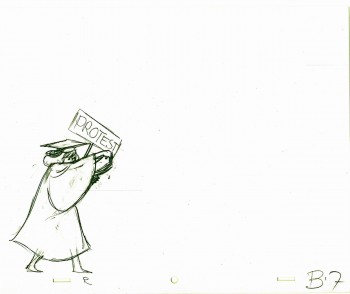 7
7
(Click any image to enlarge.)
Below is a rough PT of the piece with its staccato rhythm since it’s missing inbetweens.
Garbo Talks ruff PT On twos at 24FPS
Click left side of the black bar to play.
Right side to watch single frame.
The entire title sequence.
Thanks to Roger79 for uploading it.
Thanks to Stephen MacQuignon for finding it.
Animation &Animation Artifacts &Chuck Jones 24 Aug 2013 05:05 am
Heromakers
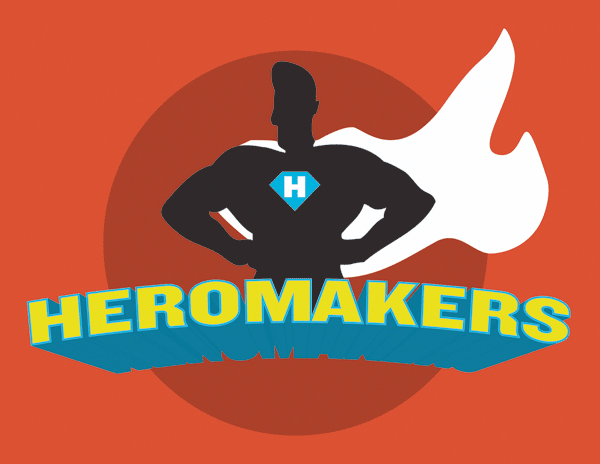
Heromakers Featurette Released
__________________________
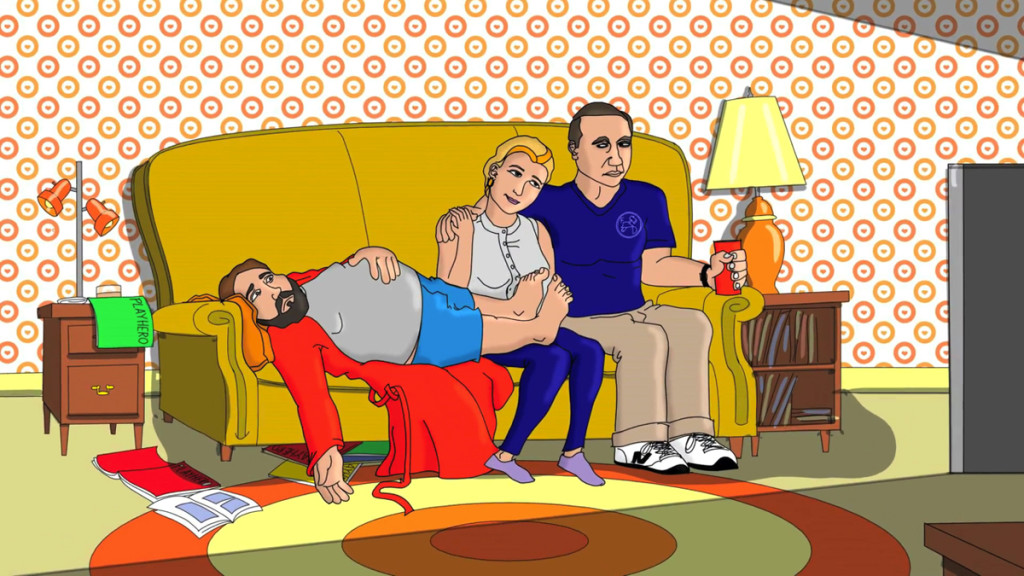 With the help of the Buzzco Associates animation team, Dan Hirshon and Jay Nog, have produced a featurette to help promote their animated sitcom, Heromakers.
With the help of the Buzzco Associates animation team, Dan Hirshon and Jay Nog, have produced a featurette to help promote their animated sitcom, Heromakers. 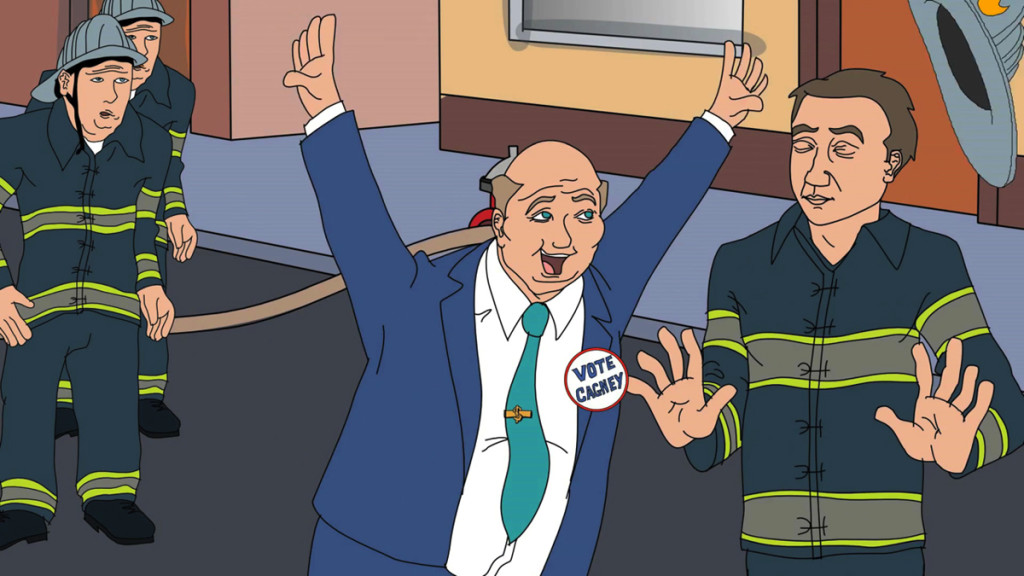
The “Simpsons meets X-Men” comedy series revolves around the dysfunctional Murray Family and
their business that offers human clients the opportunity to experience the life of a superhero.
Hirshon and Nog, both veterans in standup and sketch comedy, decided to take a sketch idea from their group, Grandma’s Favorite, and transform it into a television series. One year and many drafts later they were ready for production. They had no problem securing a talented voice-over cast, character illustrator, and sound designer/re-recording mixer, but finding the right animation team was a much more involved process. “We weren’t just looking for skilled animators. We wanted someone who was also enthusiastic about the project and related to our sense of humor,” says Nog. 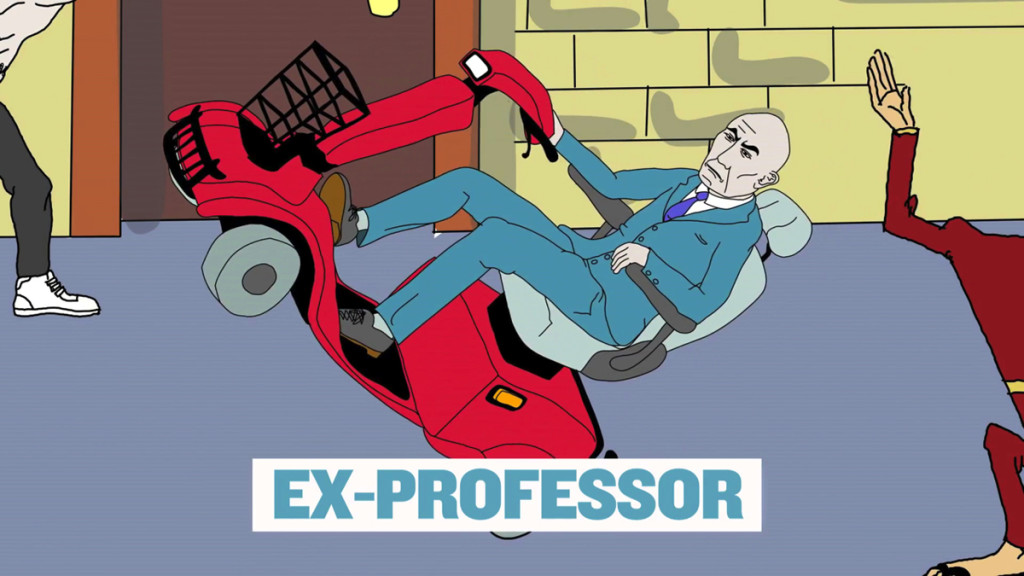
After several weeks of searching they found what they wanted in Candy Kugel, Rick Broas, and Marilyn Kraemer at Buzzco Associates, Inc. “From the first frame of the first animatic we knew we were in good hands. Everything we’d imagined and more was coming to life,” says Hirshon, “and it didn’t hurt that Candy baked us some pretty sweet brownies.” Heromakers takes place in Champion City, where Mayor Cagney’s environmental negligence has led to mutation in some citizens. To avoid public outcry, Cagney dubs the mutants “superheroes” and goes so far as to replace the fire department, with what he labels “The Super Hero Intelligence Team” (THE S.H.I.T.).
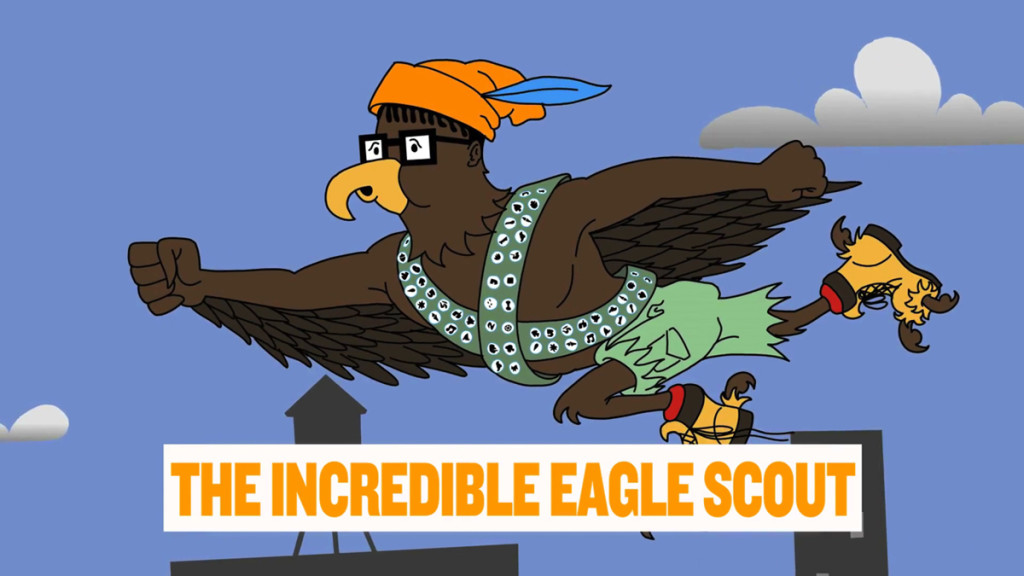
Newly unemployed firefighter, Larry Murray, and his family, decide to bring heroic values back to Champion City with their not infallible business, Heromakers. Larry supervises the client “heroes.”
His wife, Denise, acts as head of promotions. Uncle Bill designs the costumes. And their son, Tim, designs everything from rocket packs to body armor to assist in their clients’ missions.
However, what no one realizes is that Tim is powering the inventions via his secret telekinetic powers. If Larry finds out that his son is a mutant, the business may be doomed.
There’s an extended clip giving more about the Heromakers’ story, characters, cast, and crew at www.Heromakers.net.
Action Analysis &Animation &Animation Artifacts &Disney &John Canemaker 21 Aug 2013 04:54 am
Mowgli & Kaa – repost
Today I’m going to re-post this scene between Mowgli and Kann. It was loaned to me by John Canemaker and stands out like the gem it is. THere are”75 drawings in all, and I’m going to post this whole right here, thoug I’ve put in two short breaks. Enjoy.
I’m not a fan of this film, however, I can’t deny the animation is mostly excellent and sometimes brilliant. Needless to say, Frank Thomas delivered some beautiful work. This scene is a typical example of his work even though it’s not one that calls attention to itself.
In studying the scene you might pay attention to what is on one’s (1-12) as opposed to what is on two’s (13-27) and figure out why.
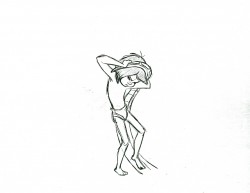 2
2(Click any image to enlarge to full animation paper size.)
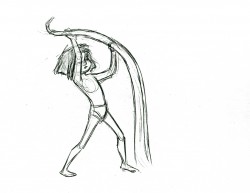 25
25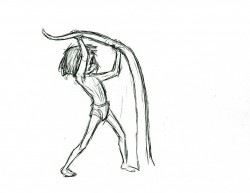 27
27
More to follow next Monday.
Here’s the QT of all the drawings from this scene.
Mowgli & Kaa
Click left side of the black bar to play.
Right side to watch single frame.
Here is another, companion scene with the same two characters. (It comes in the film with only a closeup of Kaa separating the two.)
There are 103 drawings to the scene, so I can’t possibly get them all into the one post. Consequently, I’ll try to do it in three.
Once again, many thanks go to John Canemaker for sharing these on line.
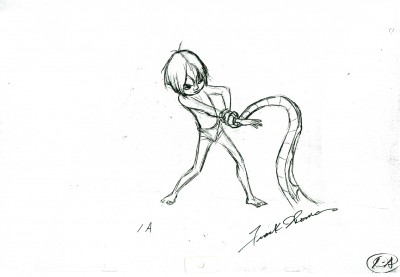 1a
1a(Click any image to enlarge.)
The Following QT movie is of the complete scene.
I love how he shakes his head and mouths the word “No”
just prior to wrenching his hand from Kaa’s grip.
Right side to watch single frame.
- Last week, I posted the first part of a scene Frank Thomas animated for The Jungle Book. This is the second scene offered that involved the boy, Mowgli, and Kaa, the snake.
This scene follows one I posted several months back. (The two come in the film with only a closeup of Kaa separating them.)
The 103 drawings in the scene will have to be broken into three parts, so you can expect the last third next week.
Once again, many thanks go to John Canemaker for allowing me to share these on line.
I begin with the last of the drawings up last week, #33:
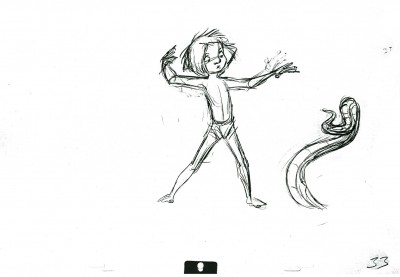 33
33(Click any image to enlarge.)
The Following QT movie is of the complete scene.
Click left side of the black bar to play.
Right side to watch single frame.
Animation &Animation Artifacts &Art Art &Articles on Animation 05 Aug 2013 11:35 pm
King of the Woild

I received an extraordinary award from the The St. Louis Film Festival. This is proof positive that I am the world’s greatest animator. Bill Plympton received the only other one of these awards some three years ago. My current one makes me a true original. (Somehow I ended up as Vincent Price, but I don’t mind so much. It’s an attractive and large – the key word being large = award. When the award makes it to New York, I’ll post it so you can get a look.
Sorry for the delay in some of the new and recent posts. I’m afraid there will be more to come before everything actually gets new.
Action Analysis &Animation &Animation Artifacts &Commentary &Hubley &repeated posts &walk cycle 02 Aug 2013 04:29 am
Marky’s Walk, cycled
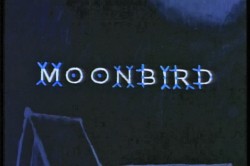 - If I had to choose who was my favorite animator, I’d have a tough time. Equal credit would probably have to go to three different people: Bobe Cannon, Tissa David and Bill Tytla. Jim Tyer and Ed Smith would fall just a smidgen below these three, for me. But there are none like them all, as far as I’m concerned.
- If I had to choose who was my favorite animator, I’d have a tough time. Equal credit would probably have to go to three different people: Bobe Cannon, Tissa David and Bill Tytla. Jim Tyer and Ed Smith would fall just a smidgen below these three, for me. But there are none like them all, as far as I’m concerned.
I’ve posted a lot of drawings from Tissa and Bill Tytla, but have very few drawings by Bobe Cannon (nor have I seen many published anywhere.)
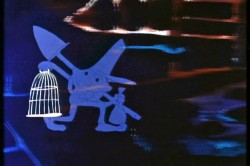 Here is a walk cycle from the beginning of Hubley’s monumental short, Moonbird. The odd numbers are extremes by Cannon, and the inbetweens (even numbers) were done by Ed Smith. Three different sized papers were used for this, and you can view them full sized if you click the thumbnails.
Here is a walk cycle from the beginning of Hubley’s monumental short, Moonbird. The odd numbers are extremes by Cannon, and the inbetweens (even numbers) were done by Ed Smith. Three different sized papers were used for this, and you can view them full sized if you click the thumbnails.
You’ll notice there’s paint all over the drawings. The ink & paint involved tracing the drawing, then using oil paints to cover all of the clear area in black. Some of that paint seeped onto the originals. In one drawing even to coloring the hat accidentally.
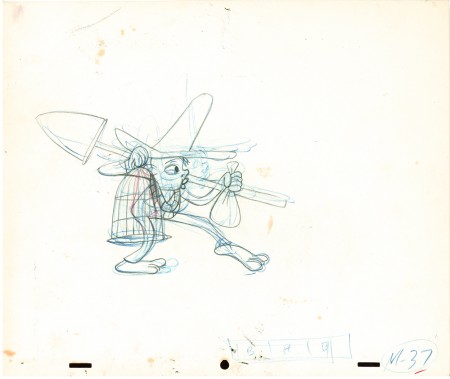 37
37(Click any image to enlarge.) “Marky” walk cycle from Moonbird
On twos at 24FPS
Click left side of the black bar to play.
Right side to watch single frame.
There’s a lot more to this scene including several variants on the walk.
At some future time, I’ll add the other drawings to show off the entire scene.
